Few artists have had as big of an influence on a city as Gian Lorenzo Bernini did in Rome. What we now see as Baroque architecture was defined by Bernini and his sculptural style is as powerful and influential today as it was then. Bernini lived from 1598 to 1680 and was recognized as a genius for most of those years.
I recently returned from a trip to Italy and was reminded of how much I love his work. From the Vatican to the Borghese and the encounters with his work at various fountains and piazzas while walking through Rome, his legacy is inexorably tied to the Eternal City.
I took some photos on my trip and thought I would share some of the details. You can always find great shots of his sculptures online, but I tried to capture some detail that you might not always see. The images are large so click them to see more.
Starting in the Vatican collection. These are plaster and terra cotta studies for the marble statues that line the bridge to the Castel San Angelo. There is something beautiful in the way that they have decayed, giving them an interesting impact.
A couple head studies for larger statutes in St. Peter’s.
It is neat to see some of the underpinnings and armature where the plaster has crumbled away.
Some of the armature was twisted wrought iron, but for more mass and less weight bundles of sticks were used.
Onto the Borghese. If you get the chance to visit Rome, make sure you schedule your trip to the Borghese museum ahead of time. It does sell out and it would be a shame to miss it! Later in this trip I was able to visit the Academia in Florence again and see Michelangelo’s David and contrast it with Bernini’s. It is hard to out do the impact of the former, but I prefer the drama and expression of the latter!
Apollo and Daphne. There is so much going on in this work. The hair, the foliage and the fabric are all done with such ridiculous skill. I haven’t ever seen another sculpture that pulls together so much in one single piece.
The little fold in Daphne’s skin, just where the latissimus dorsi and ribs wrap around the front betrays the marble and becomes flesh.
You can feel the volume of her belly where Apollo’s hand presses against it.
Look at the different textures created here. From polished skin to the roots forming, rock and the leaves of the plants.
Light was passing through the marble and illuminating it.
The marble was carved in a way that it gave the appearance of veins in the leaves when backlit.
I really love the swirl in the fabric, as if a vortex of wind whipped Apollo’s tunic as he chased after Daphne.
More spectacular contrast in texture.
I can’t even begin to understand how this was carved. I have tried a little (very little) bit of marble sculpting and to do this… it is beyond me.
Beautiful stylized hair.
More unreal skill on display.
Next up is Pluto and Proserpina. Another sculpture full of movement and power. This work doesn’t have the delicacy of the last one, but it has some amazing anatomy and also manages to turn stone into flesh, fur, hair and cloth.
Wow.
Another gorgeous twist of fabric.
I love how the fur is defined here. Also, note the little swirl in the dog’s eyes.
Have you ever seen a foot more beautiful than this?
Poor Proserpina (Persephone). The tears running down her cheeks are amazing.
This always captivates and amazes me. Another transformation of the inanimate into living material.
One last shot of a beautiful and powerful Neptune from the Trevi Fountain. I have some more images to share from my travels so stay tuned!


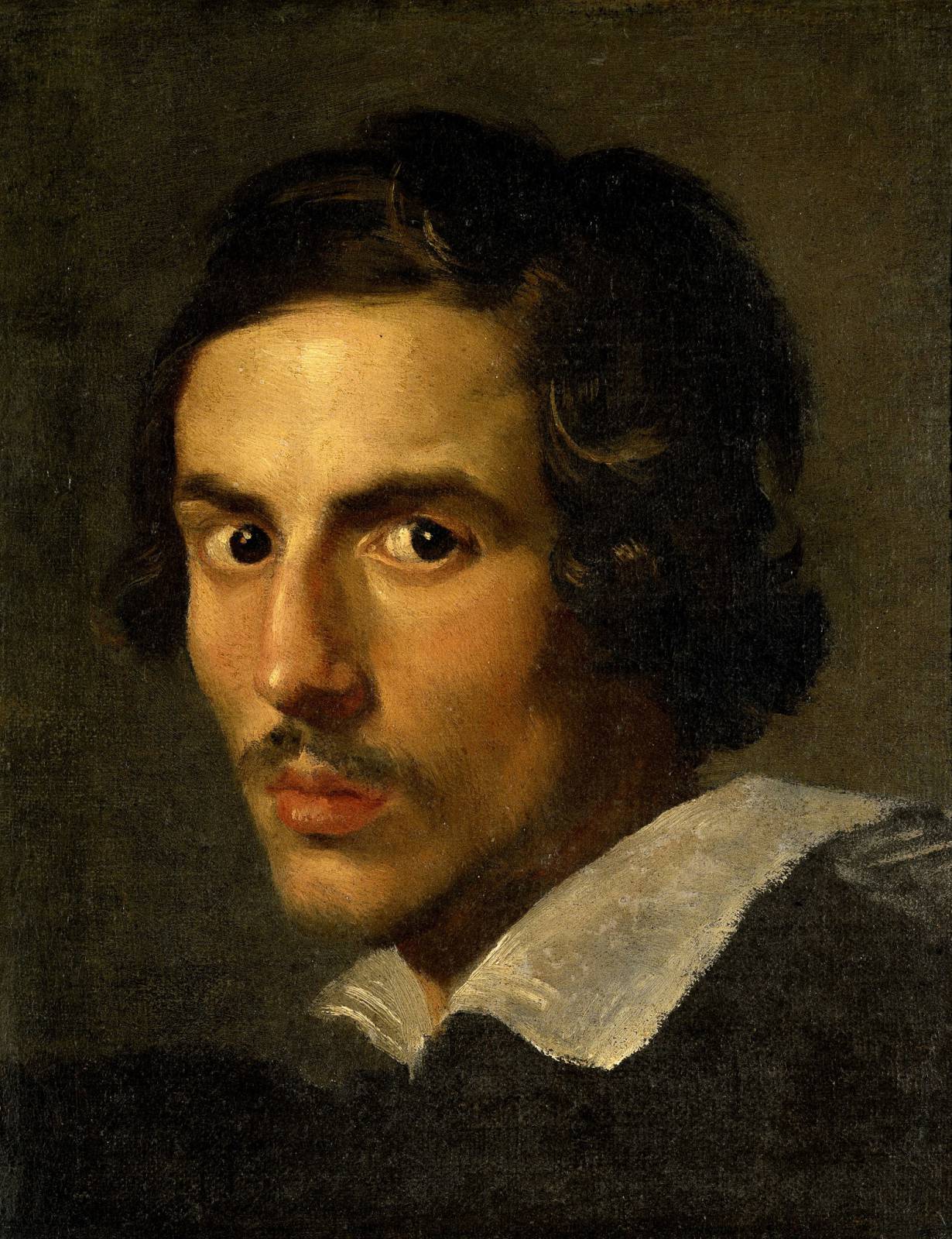
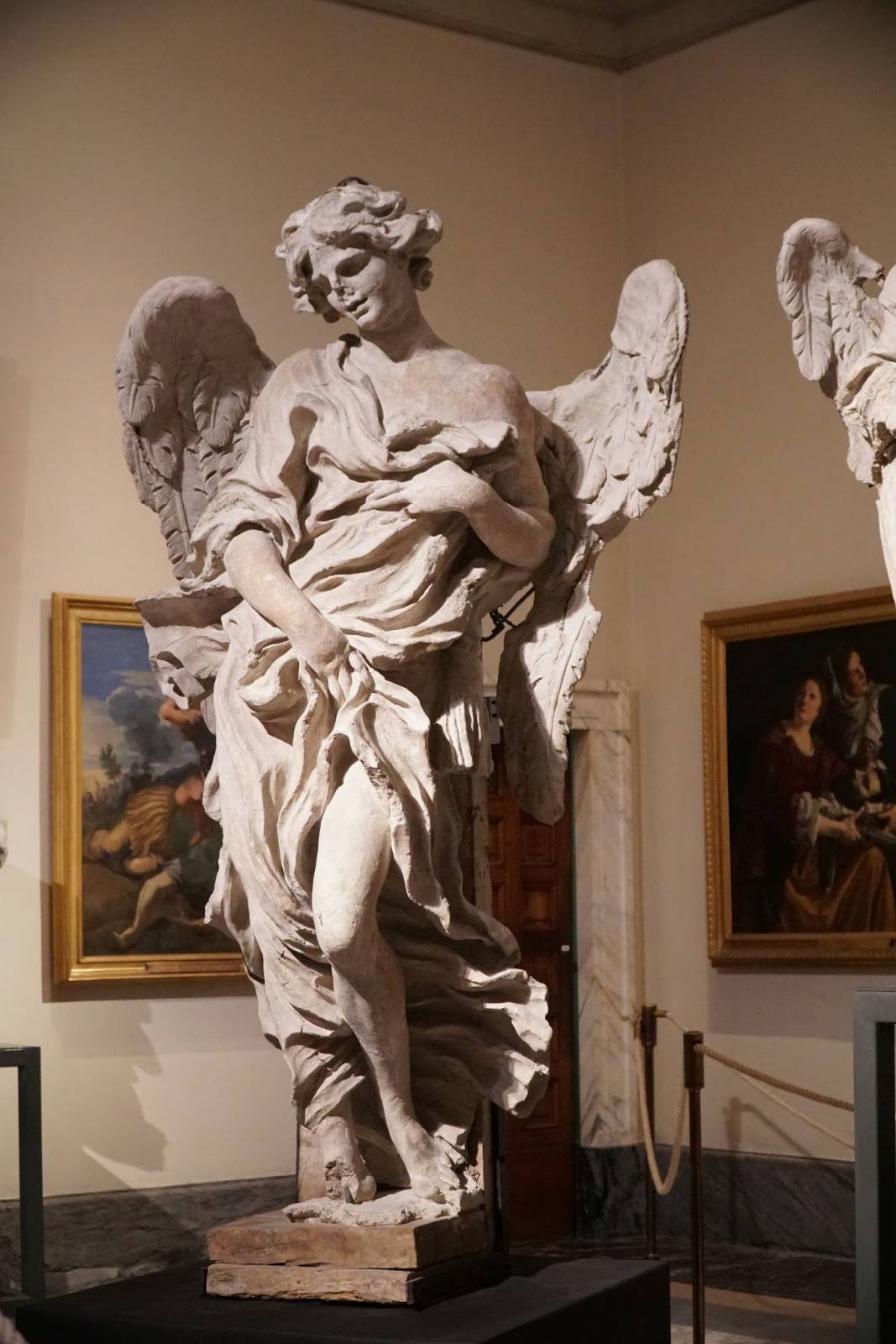
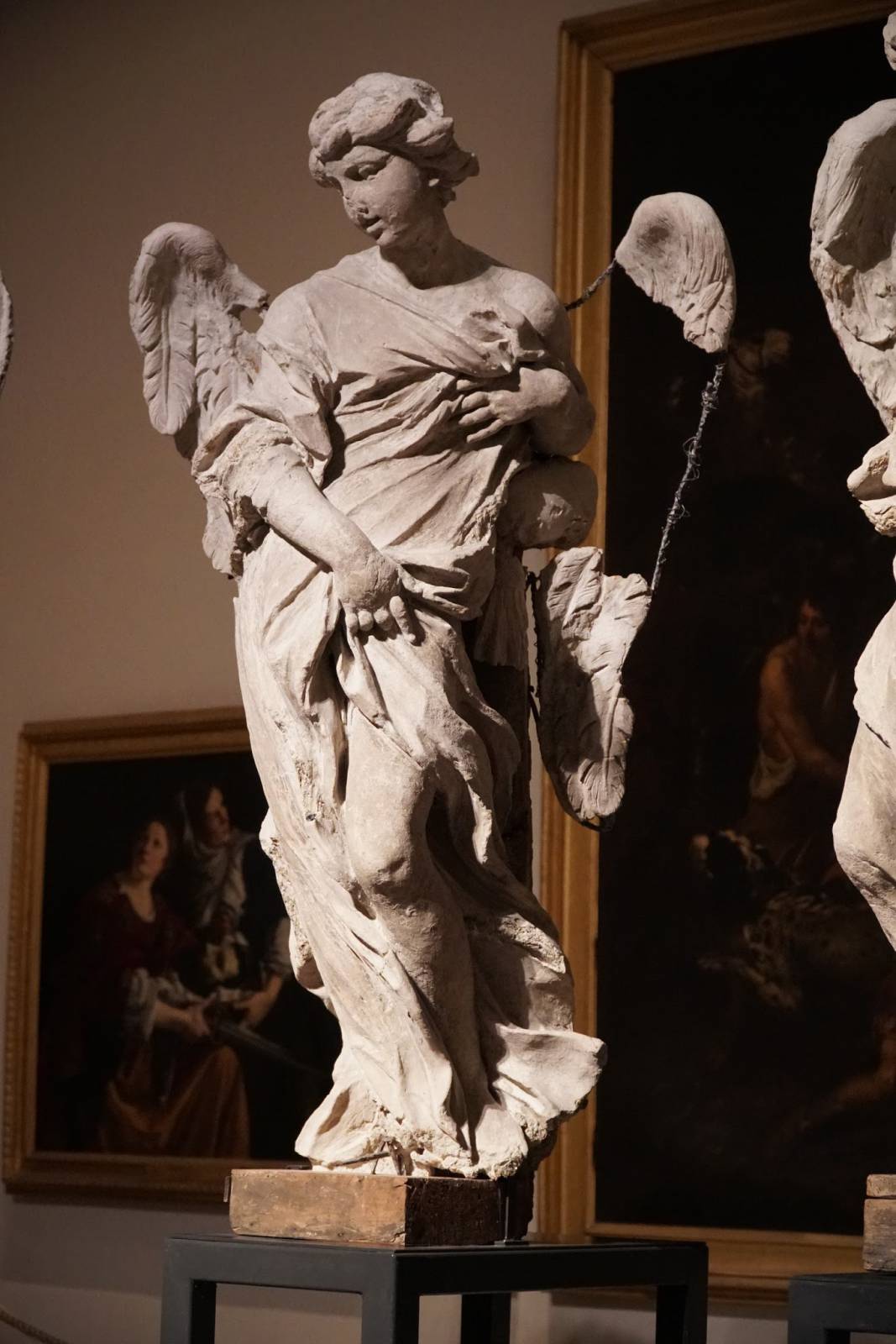
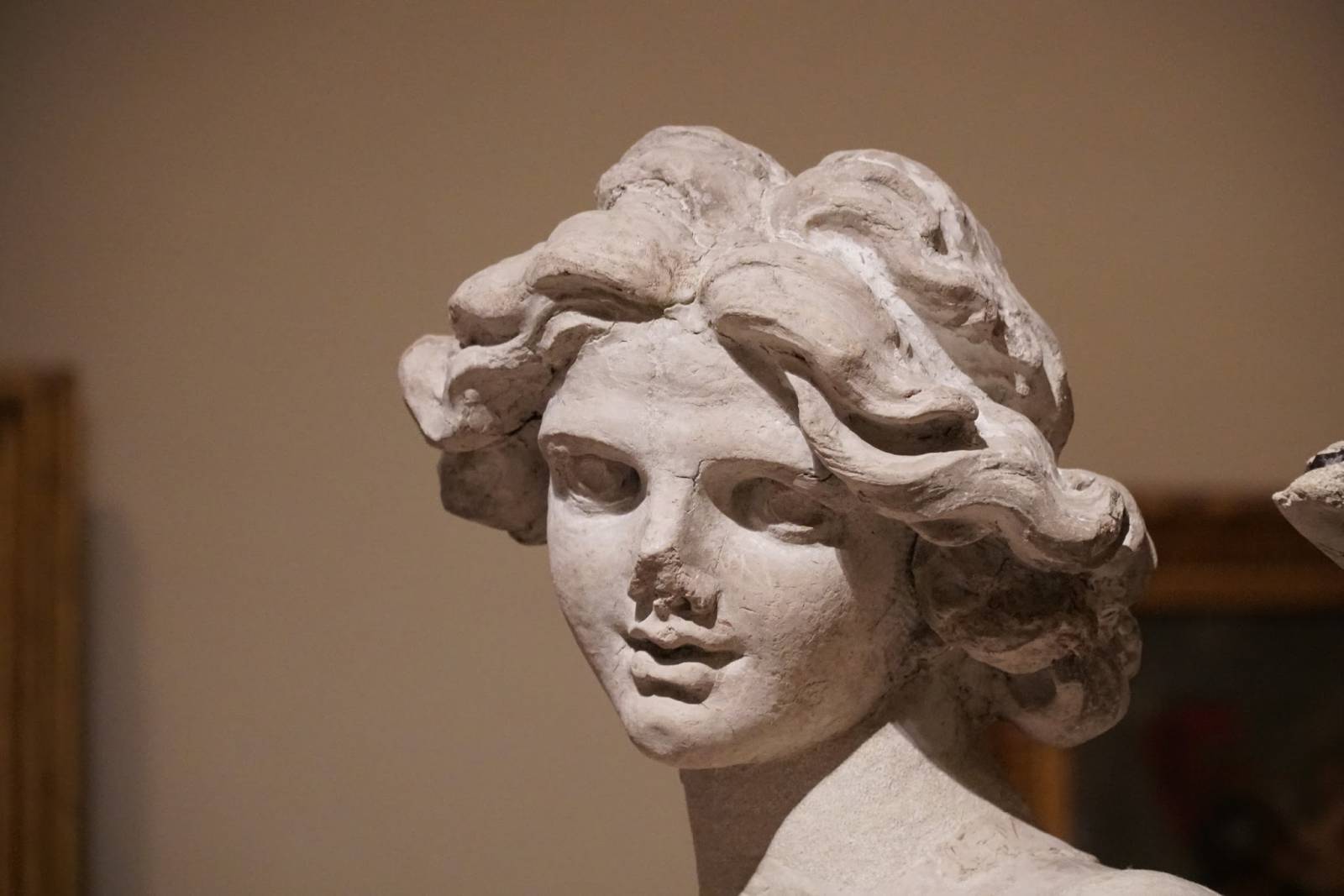
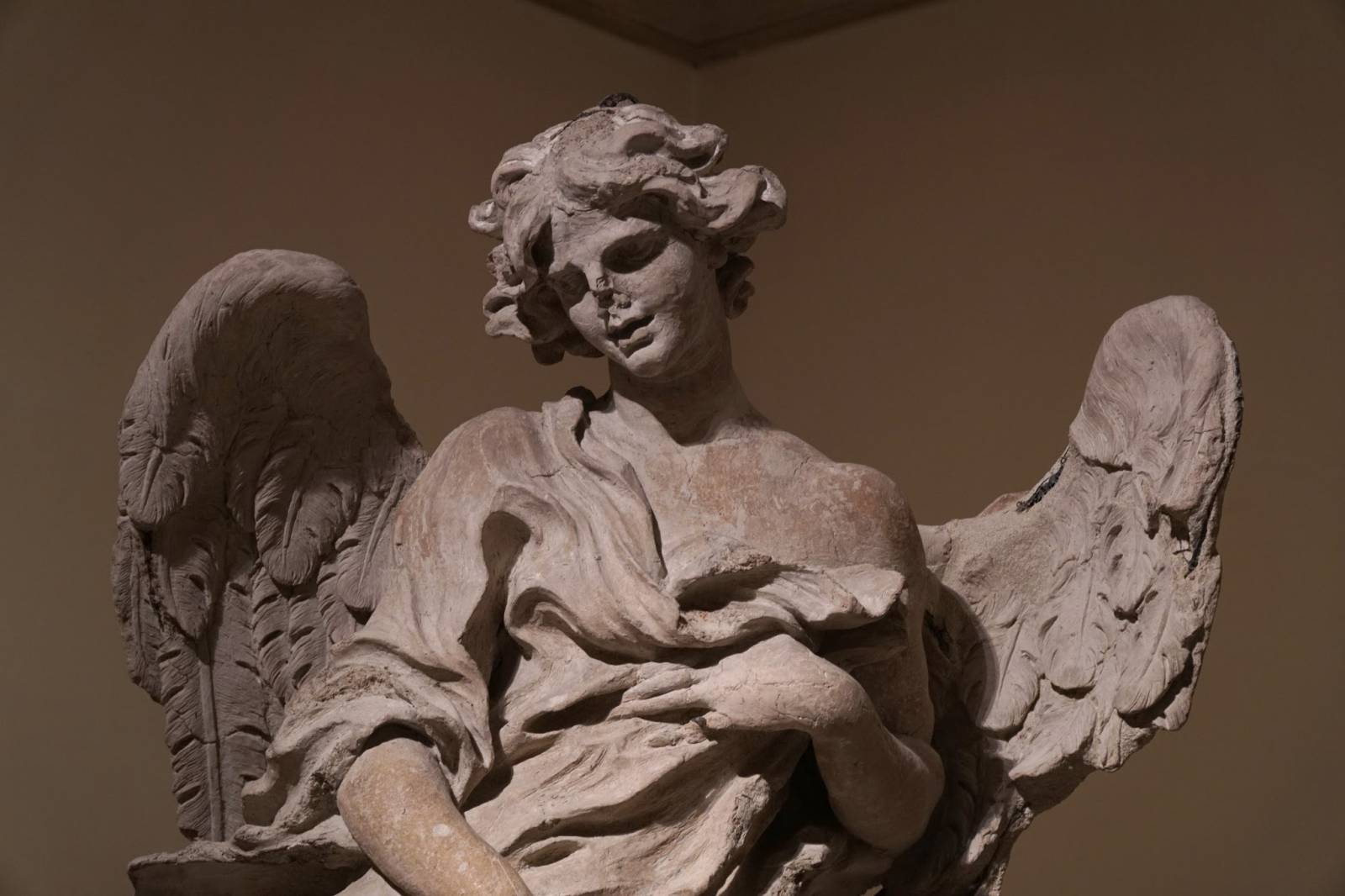
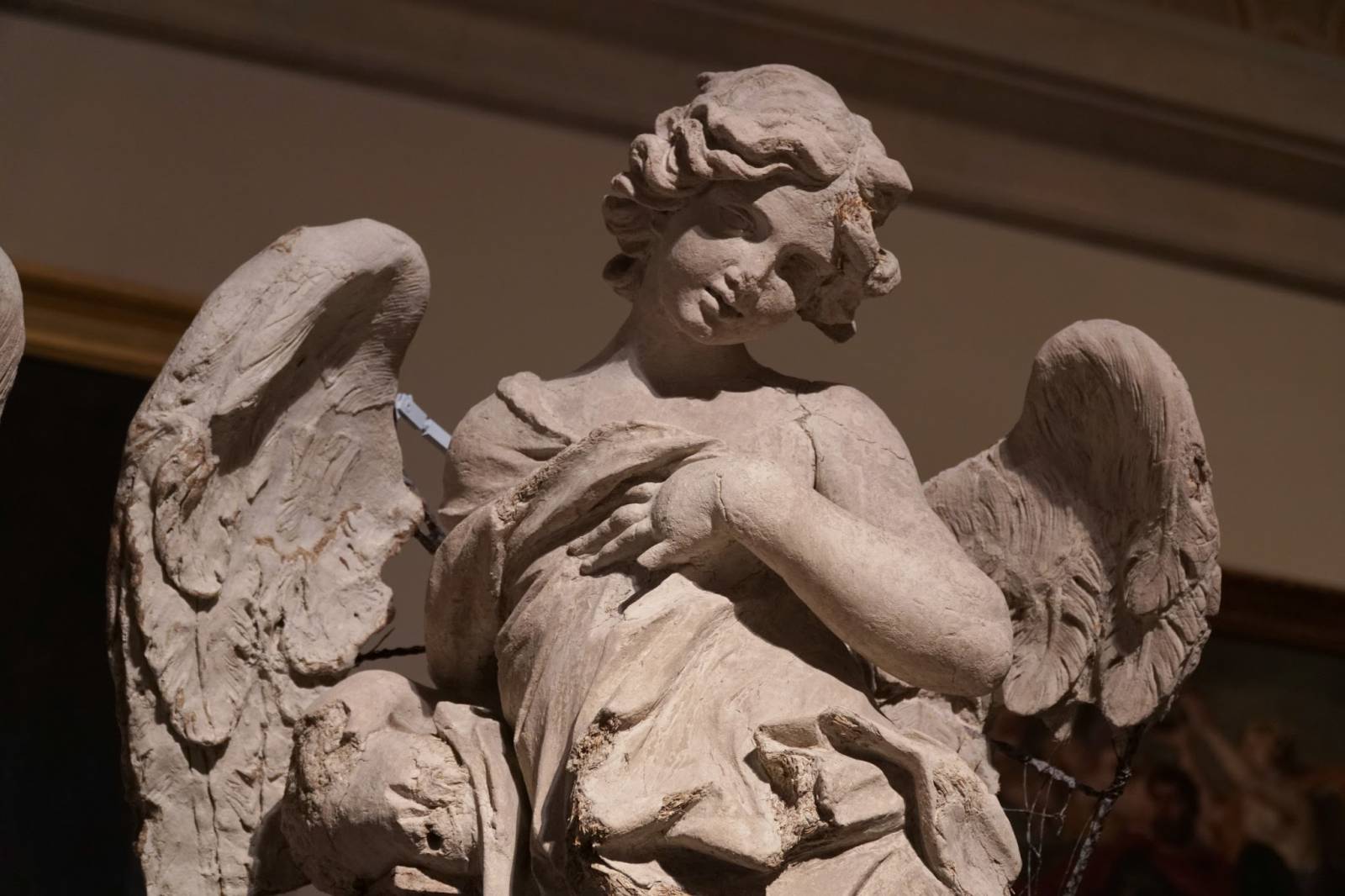
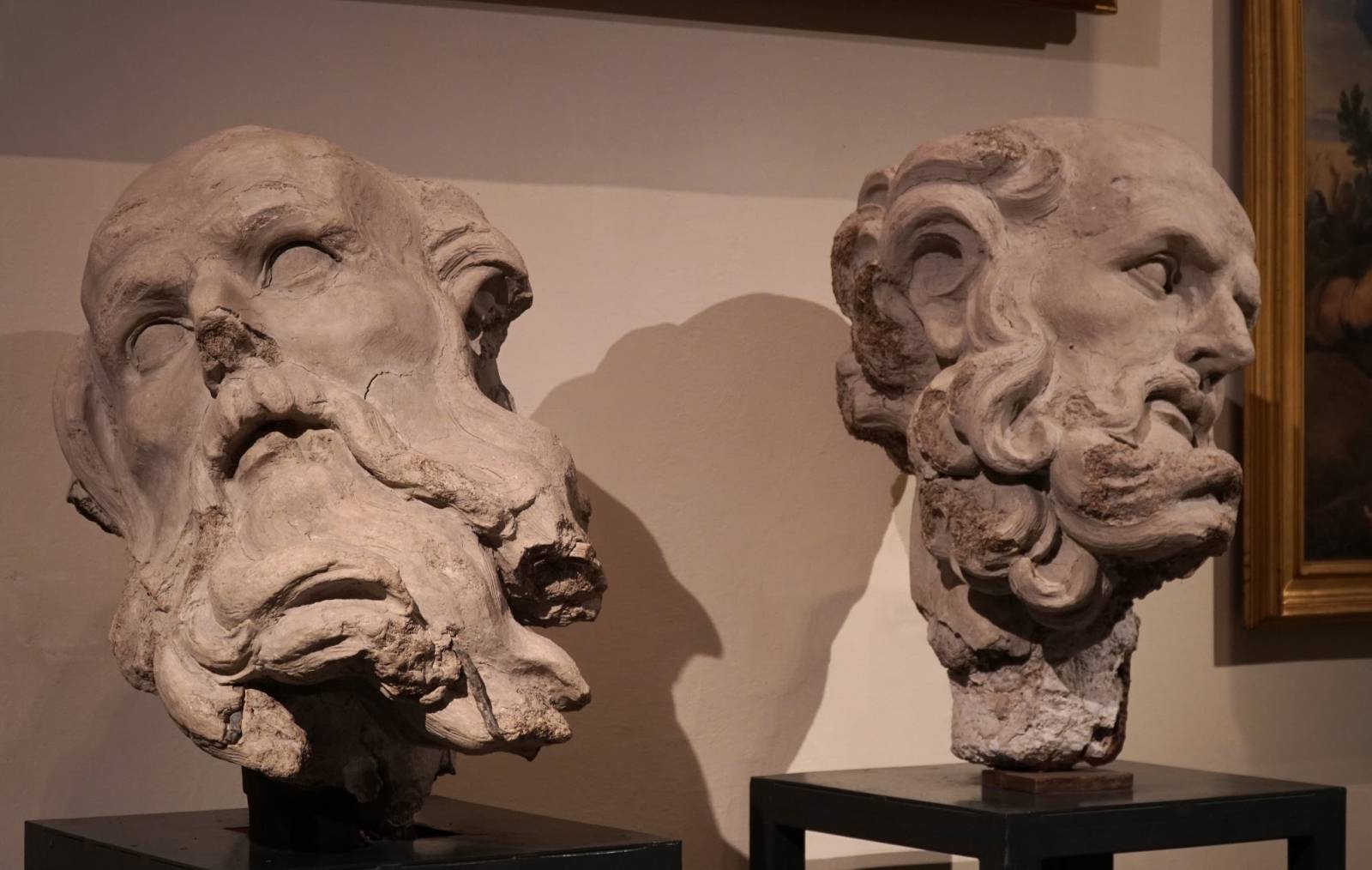
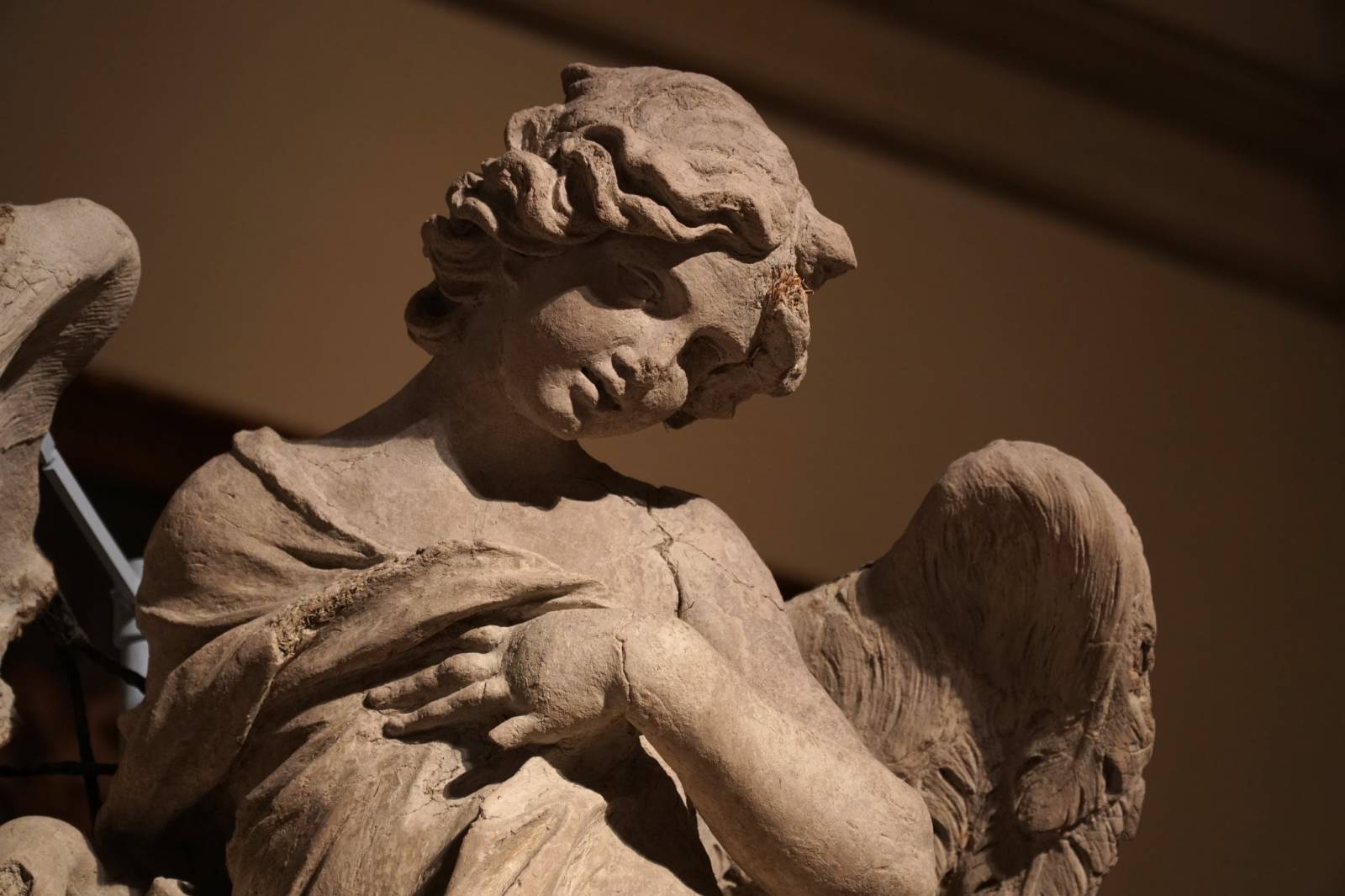
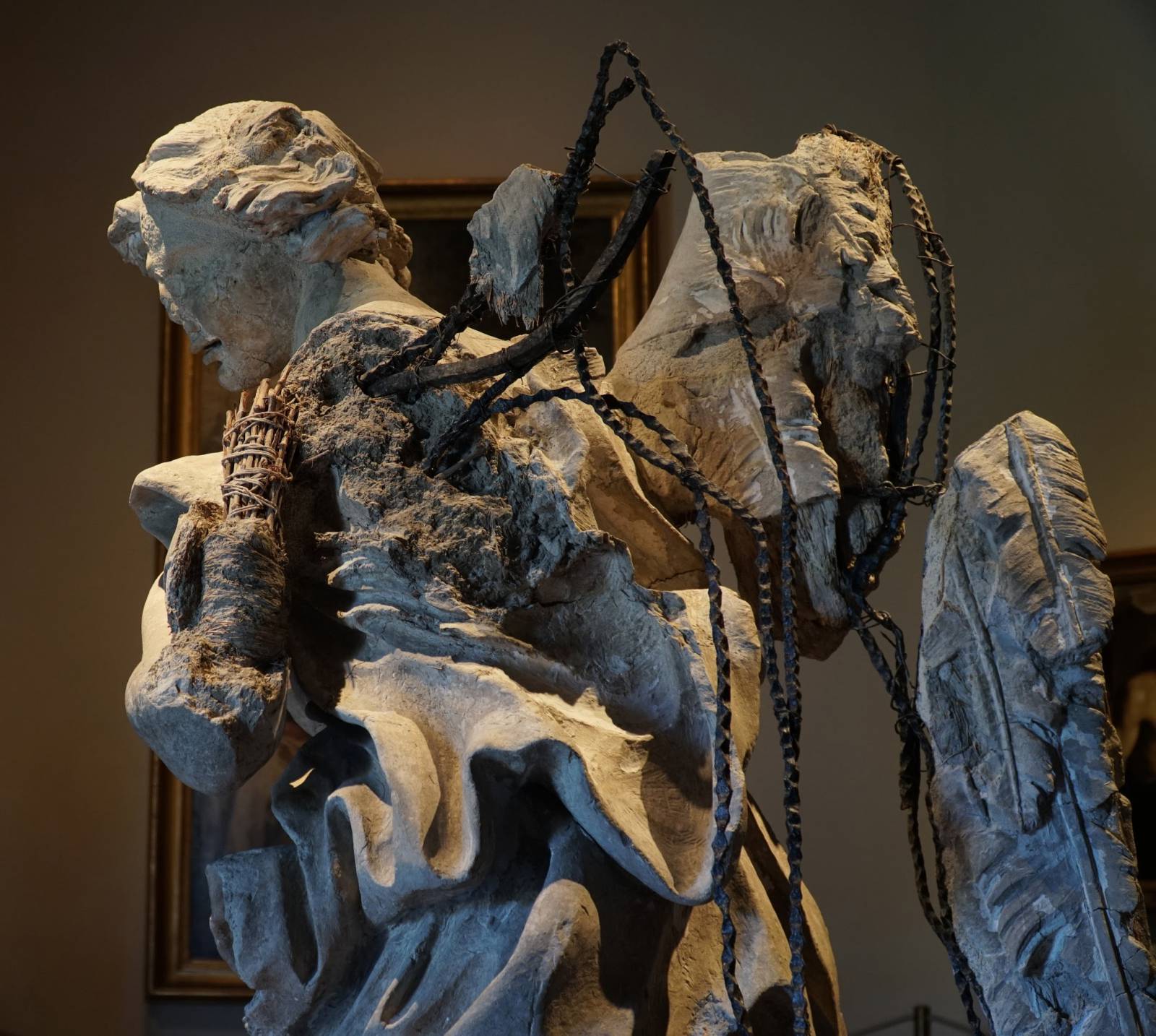
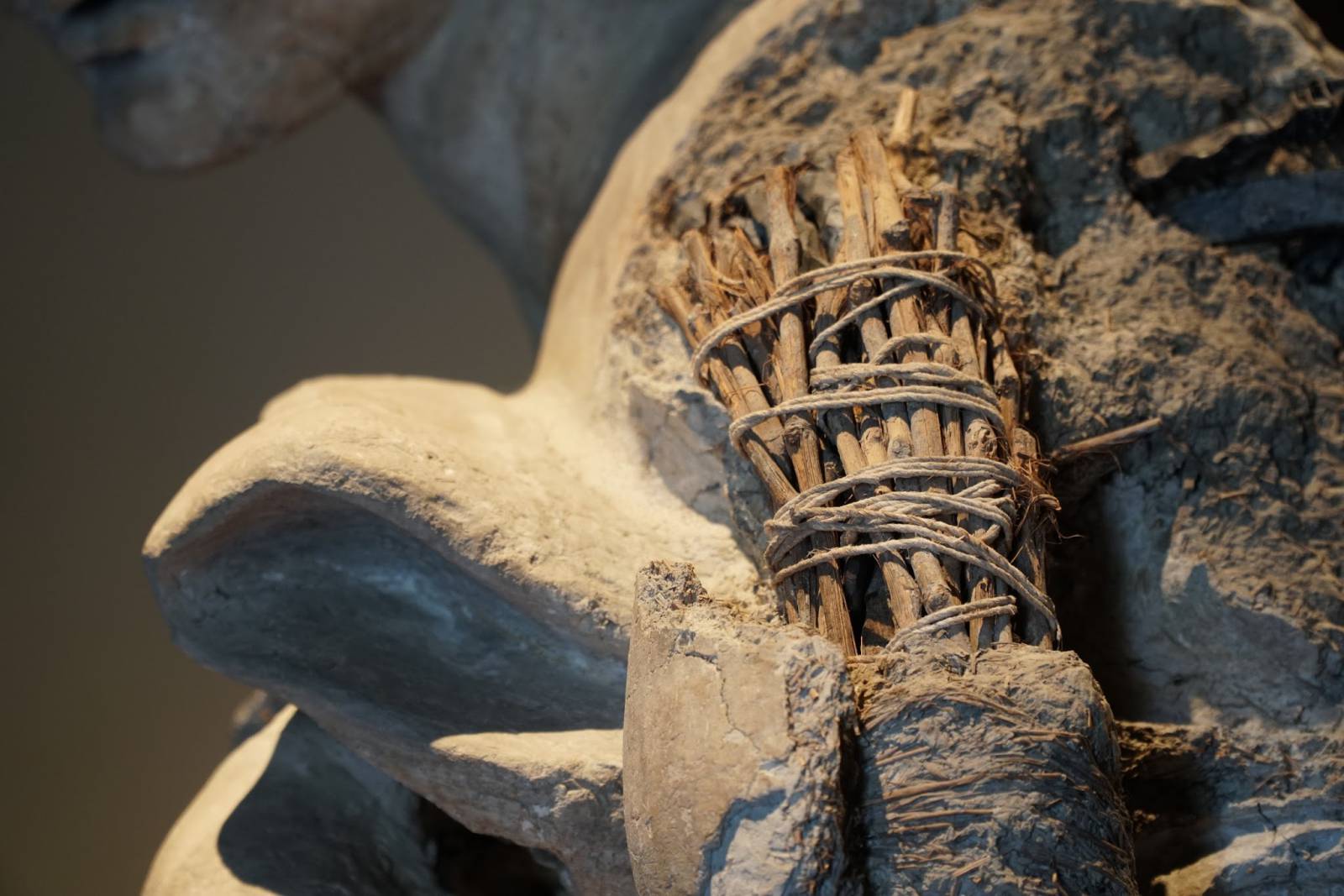
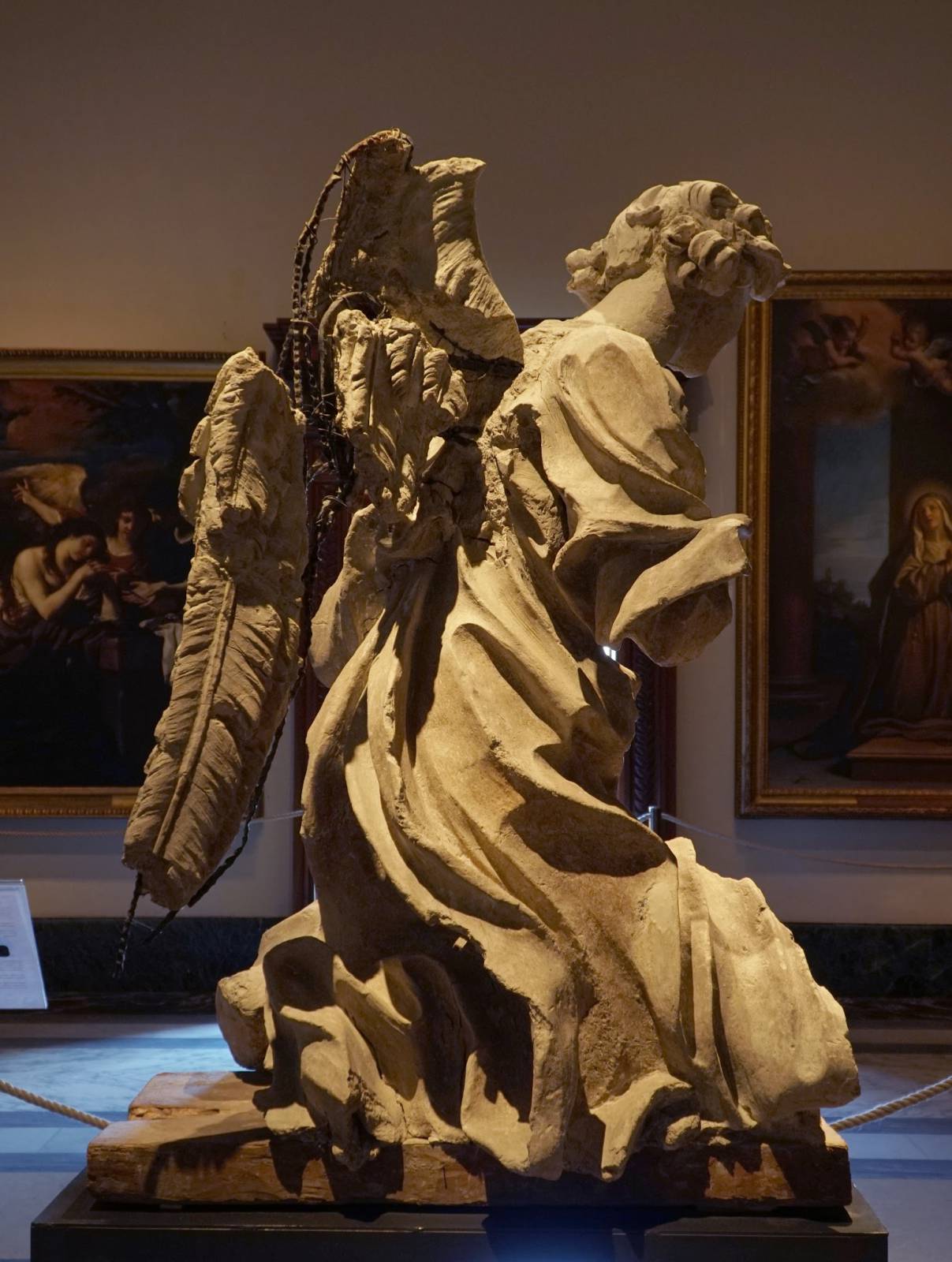
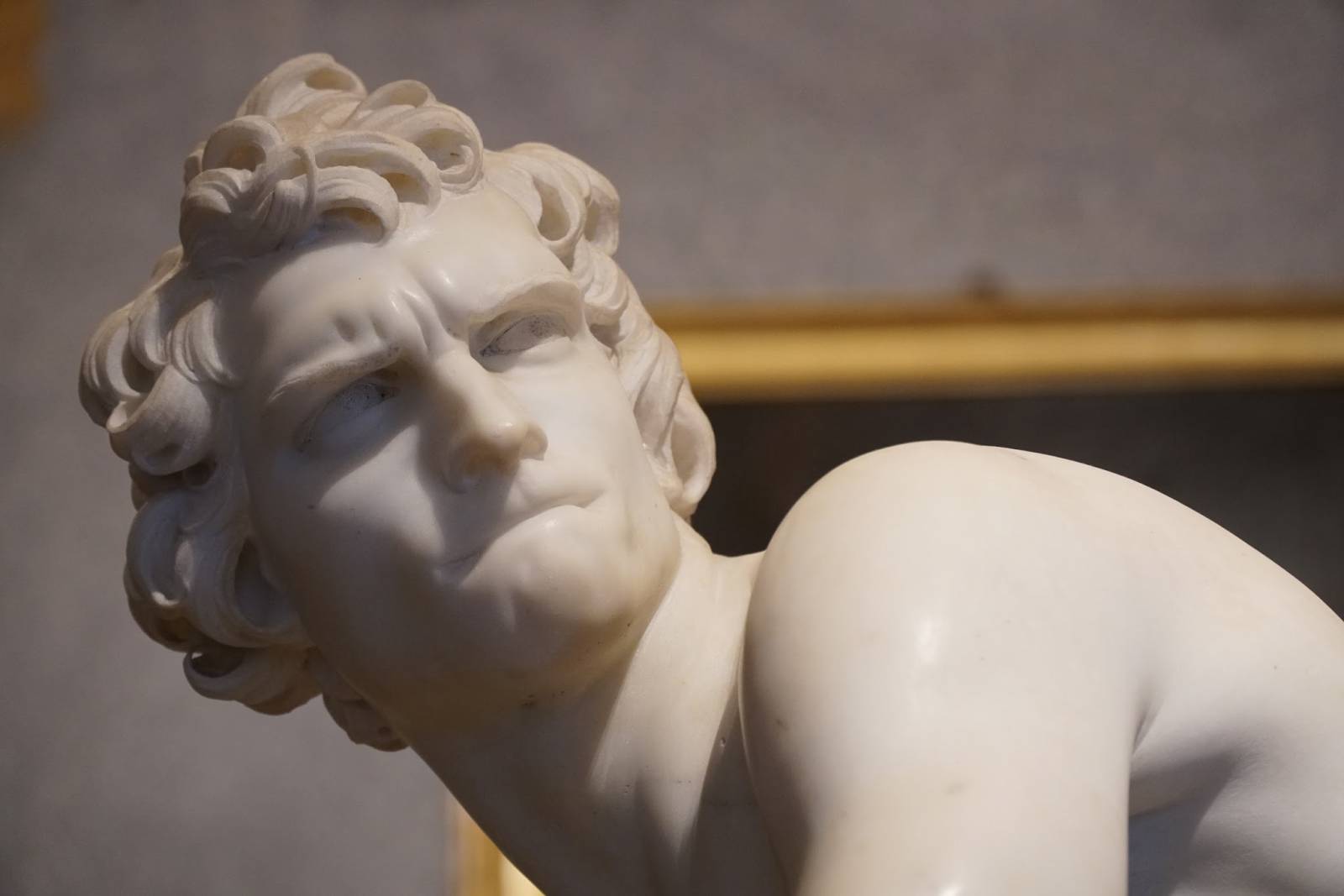
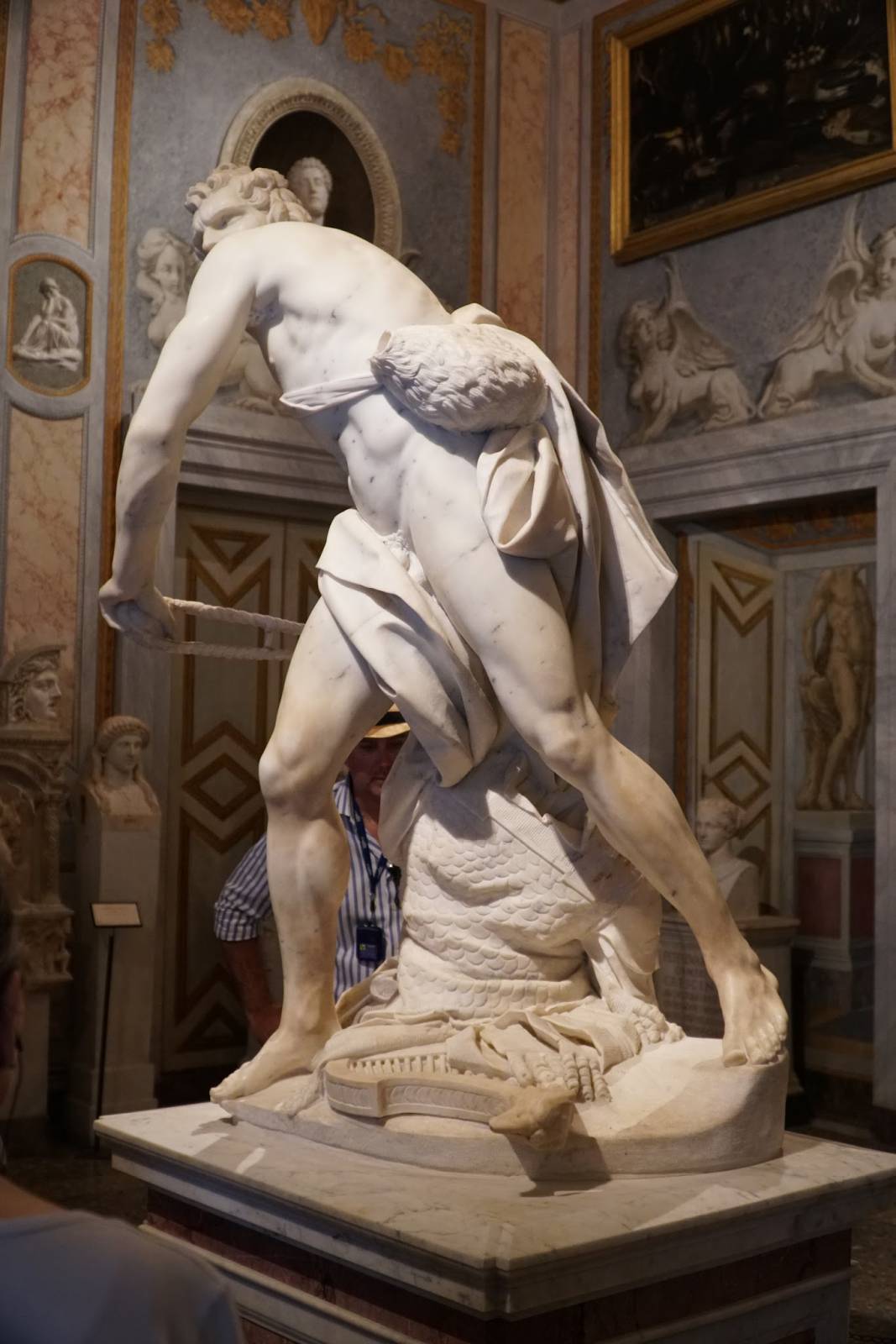
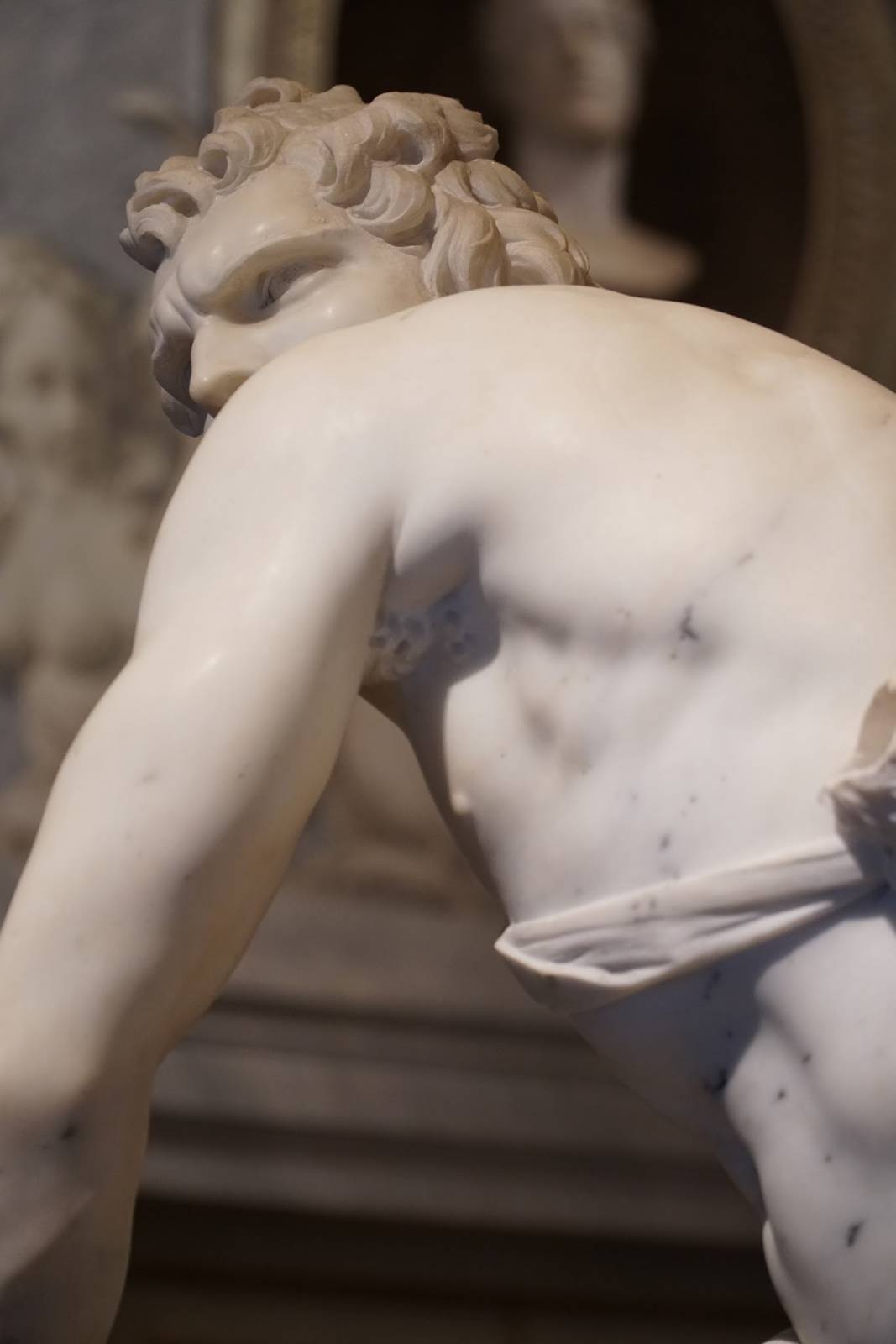
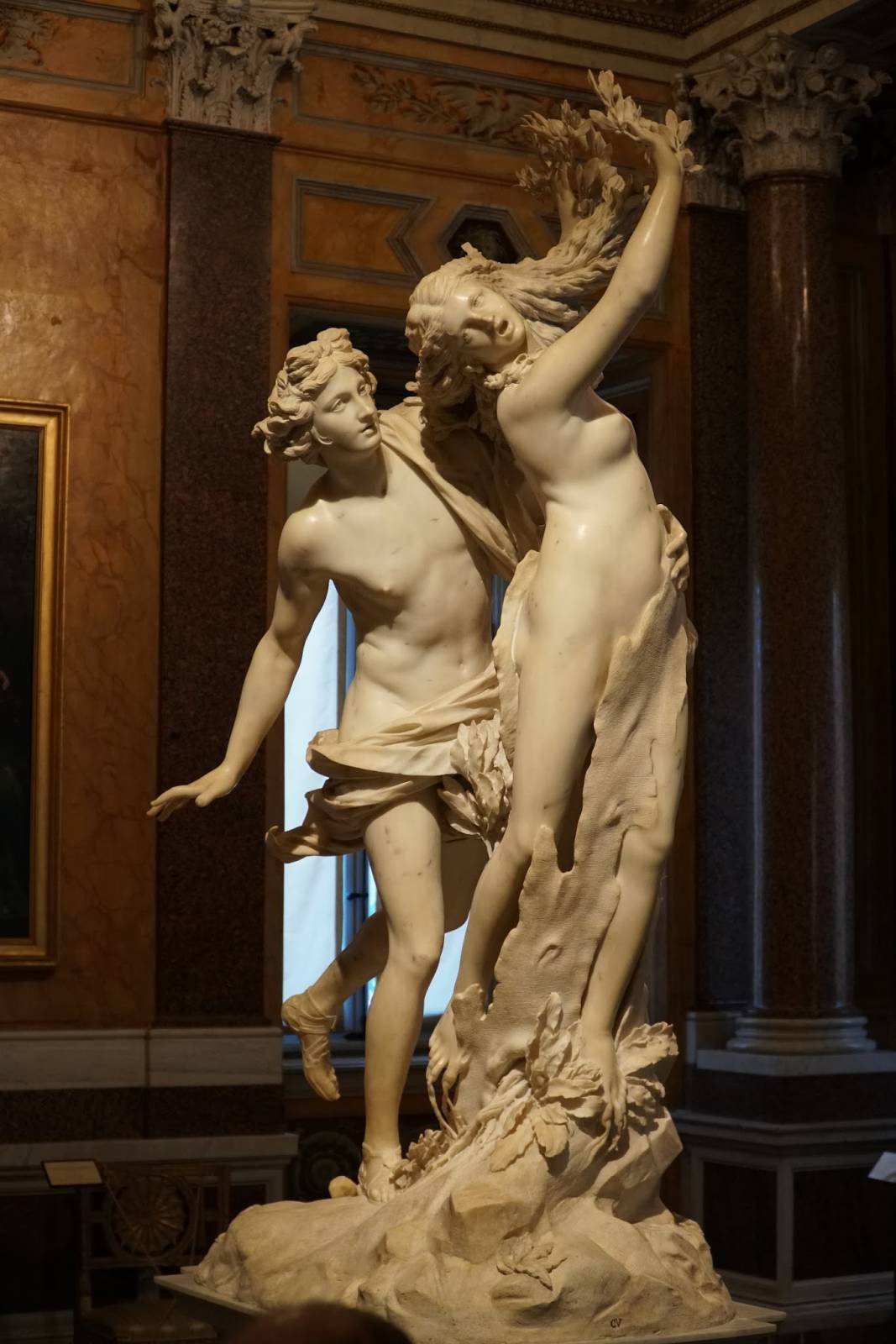
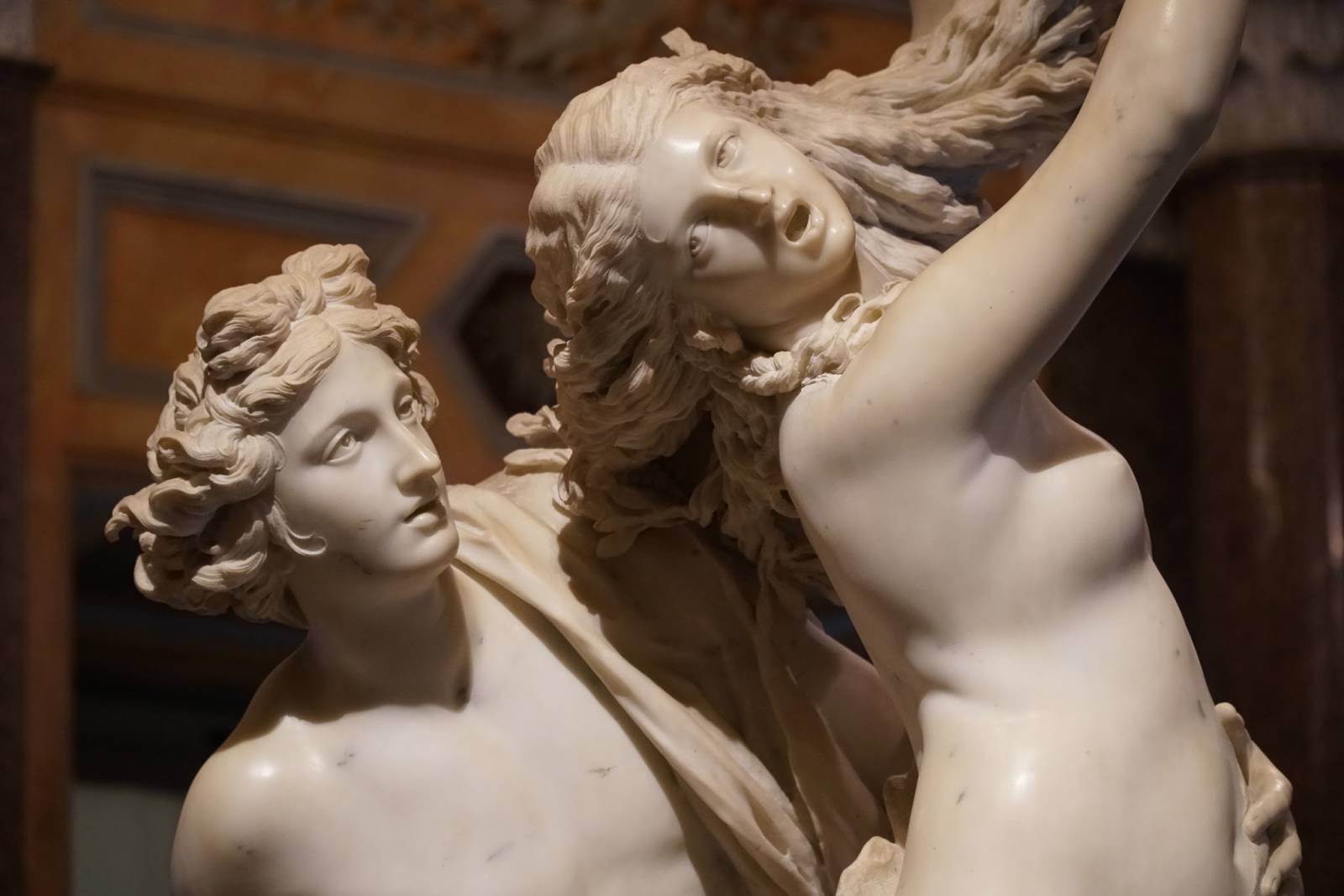
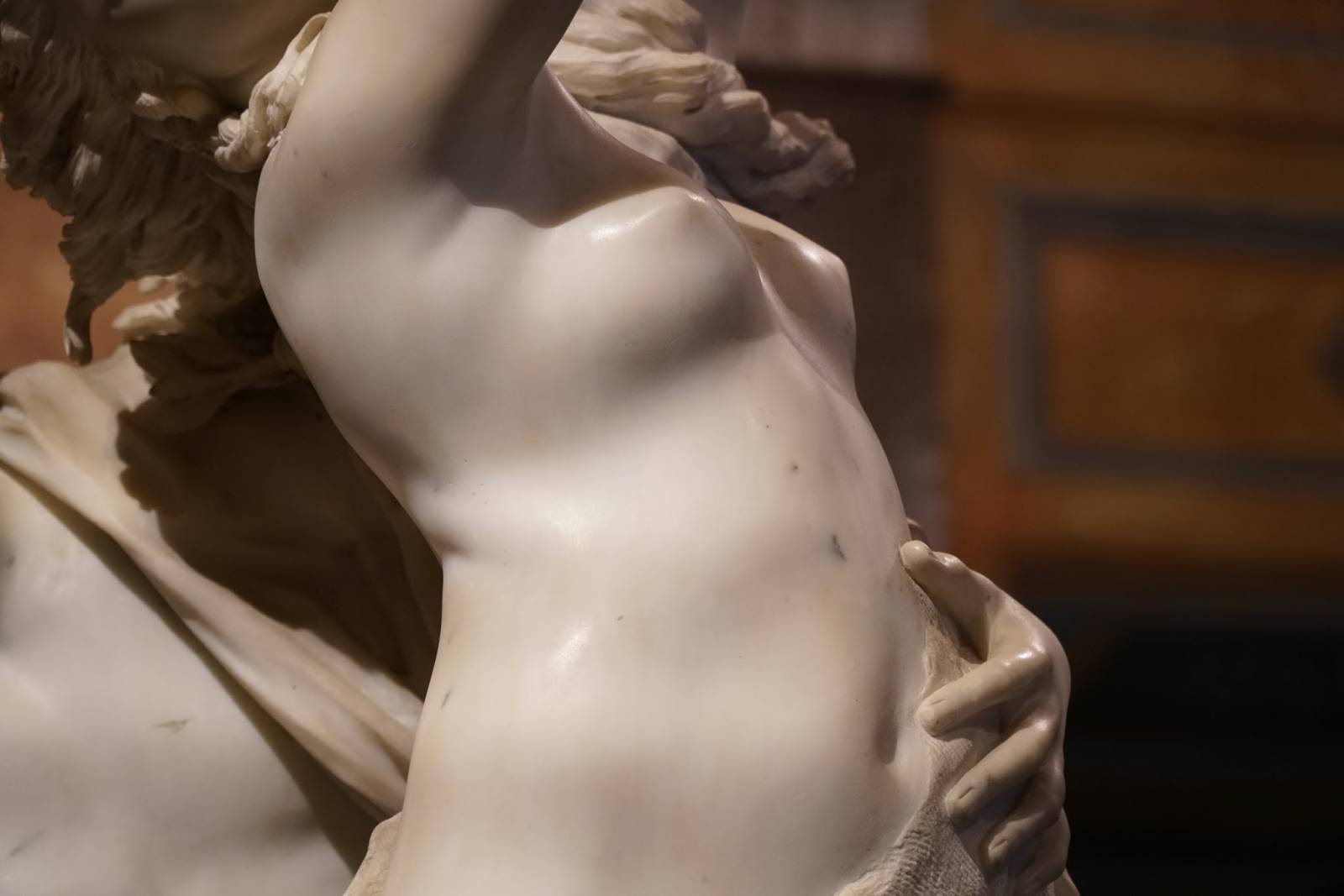
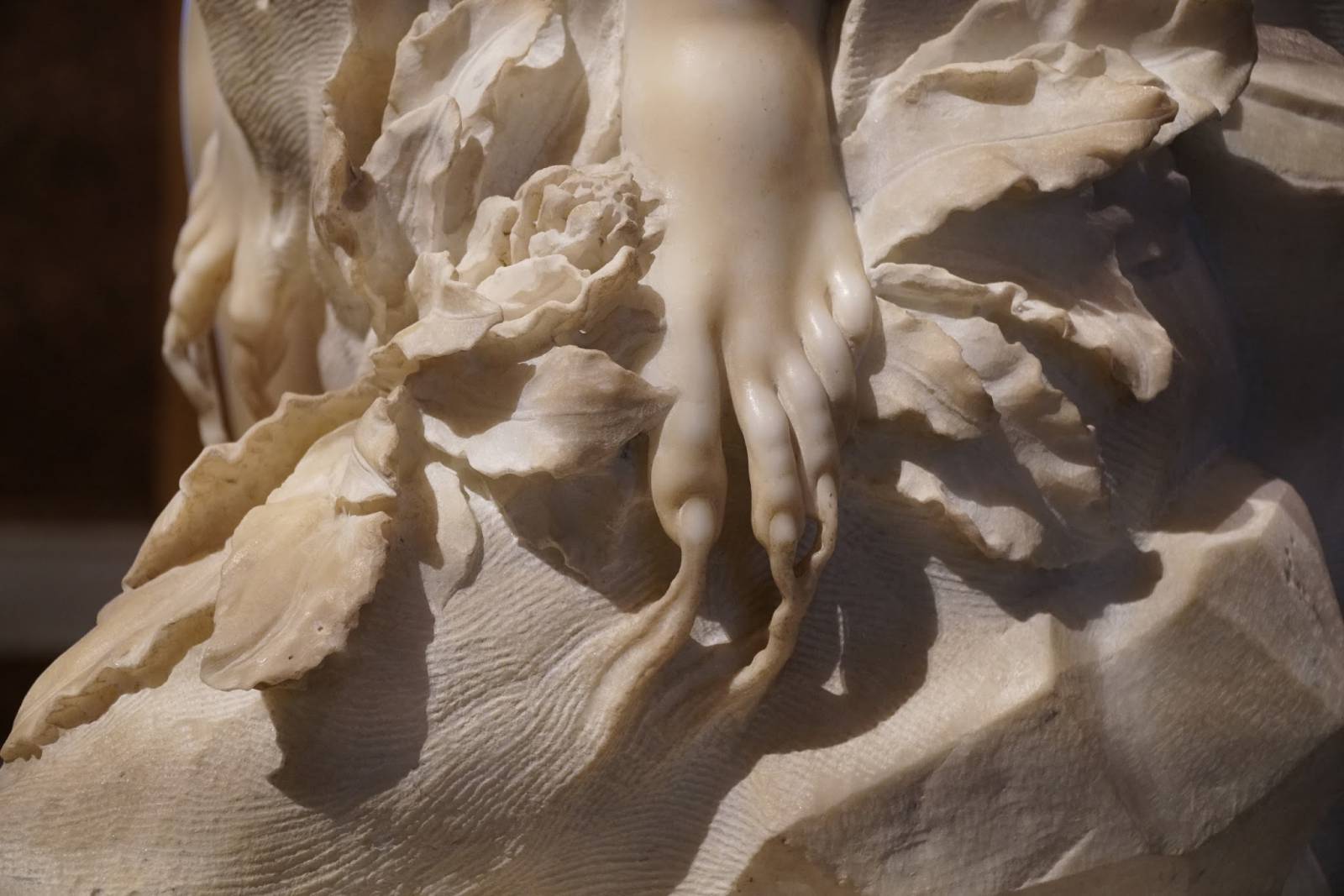
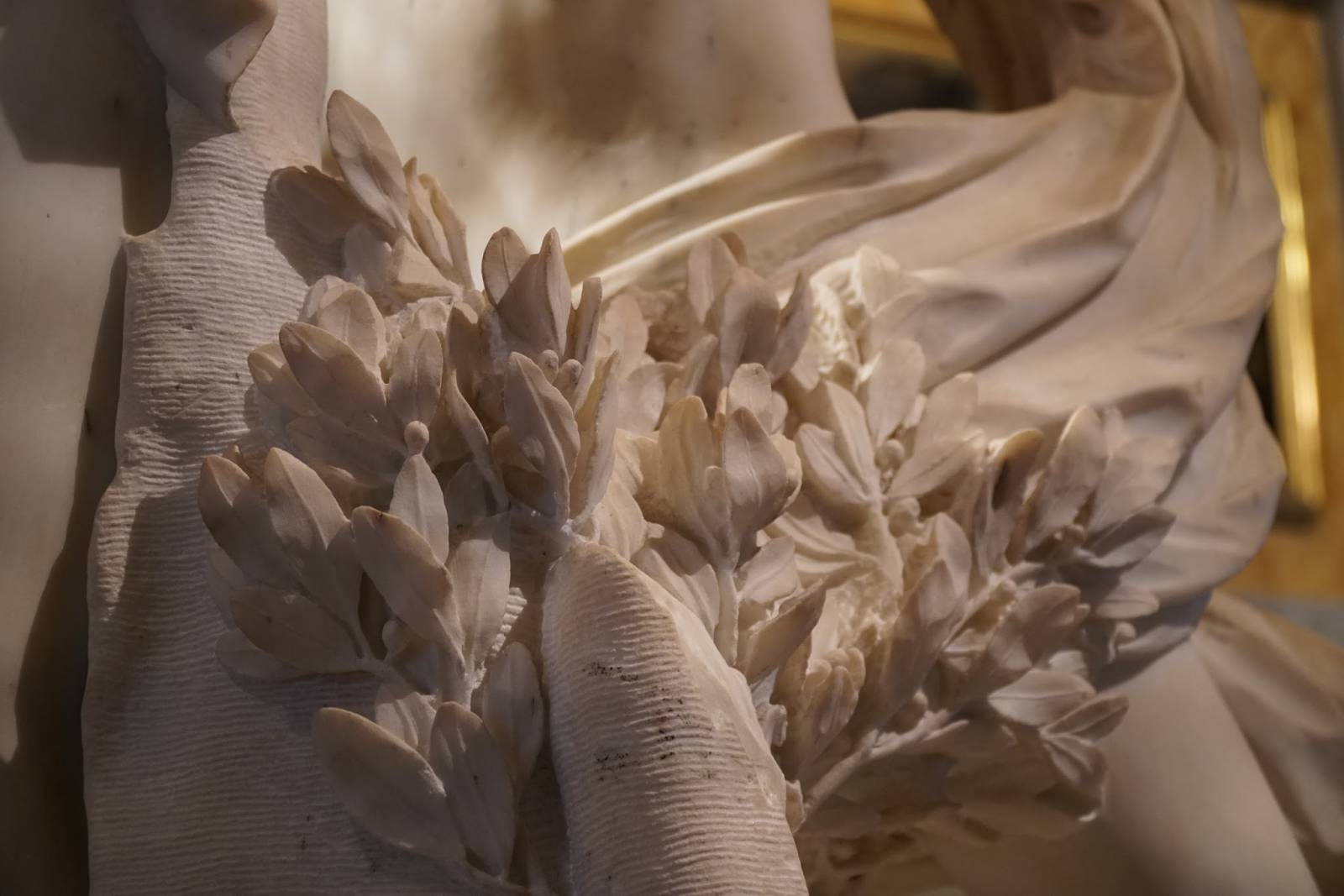
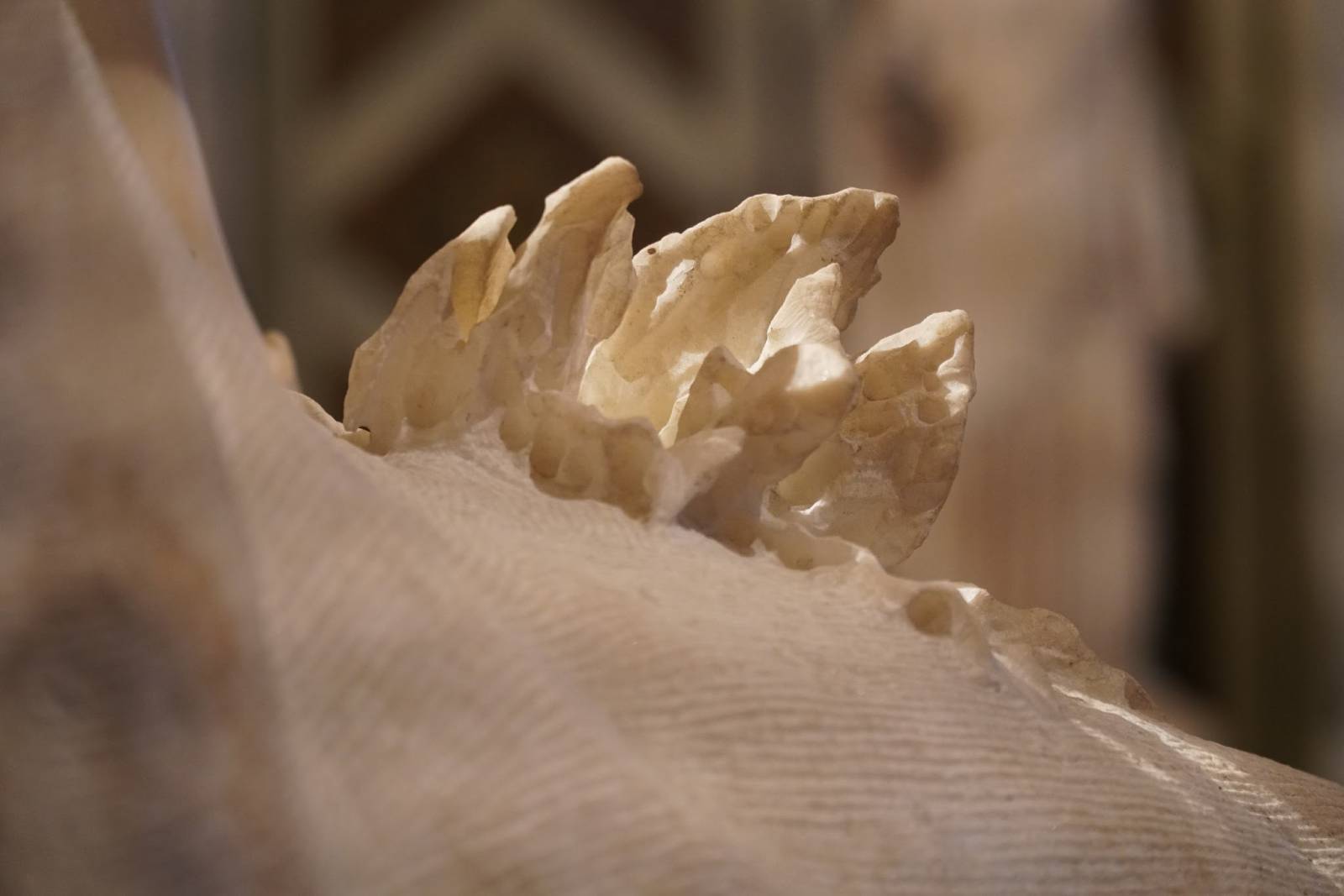

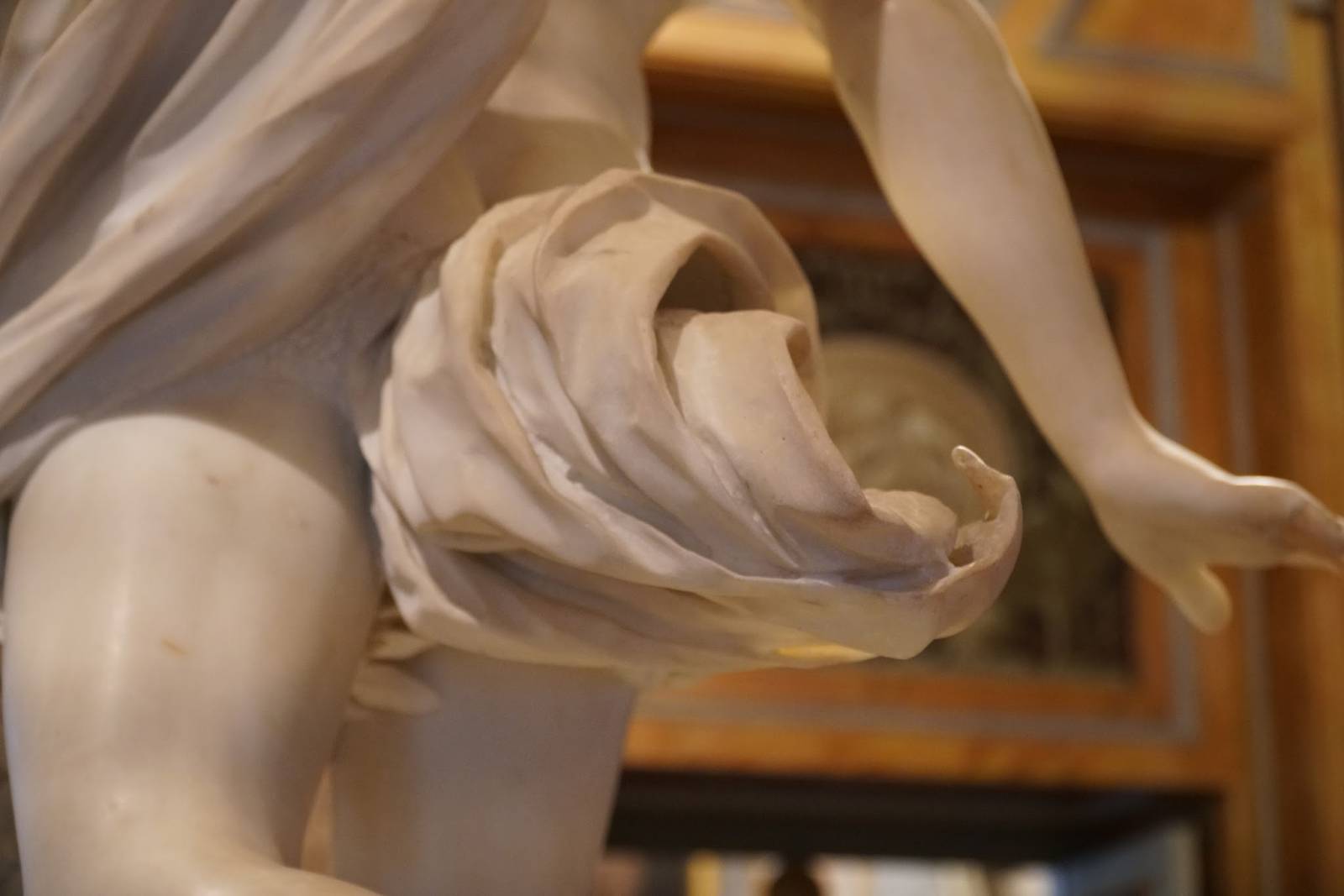
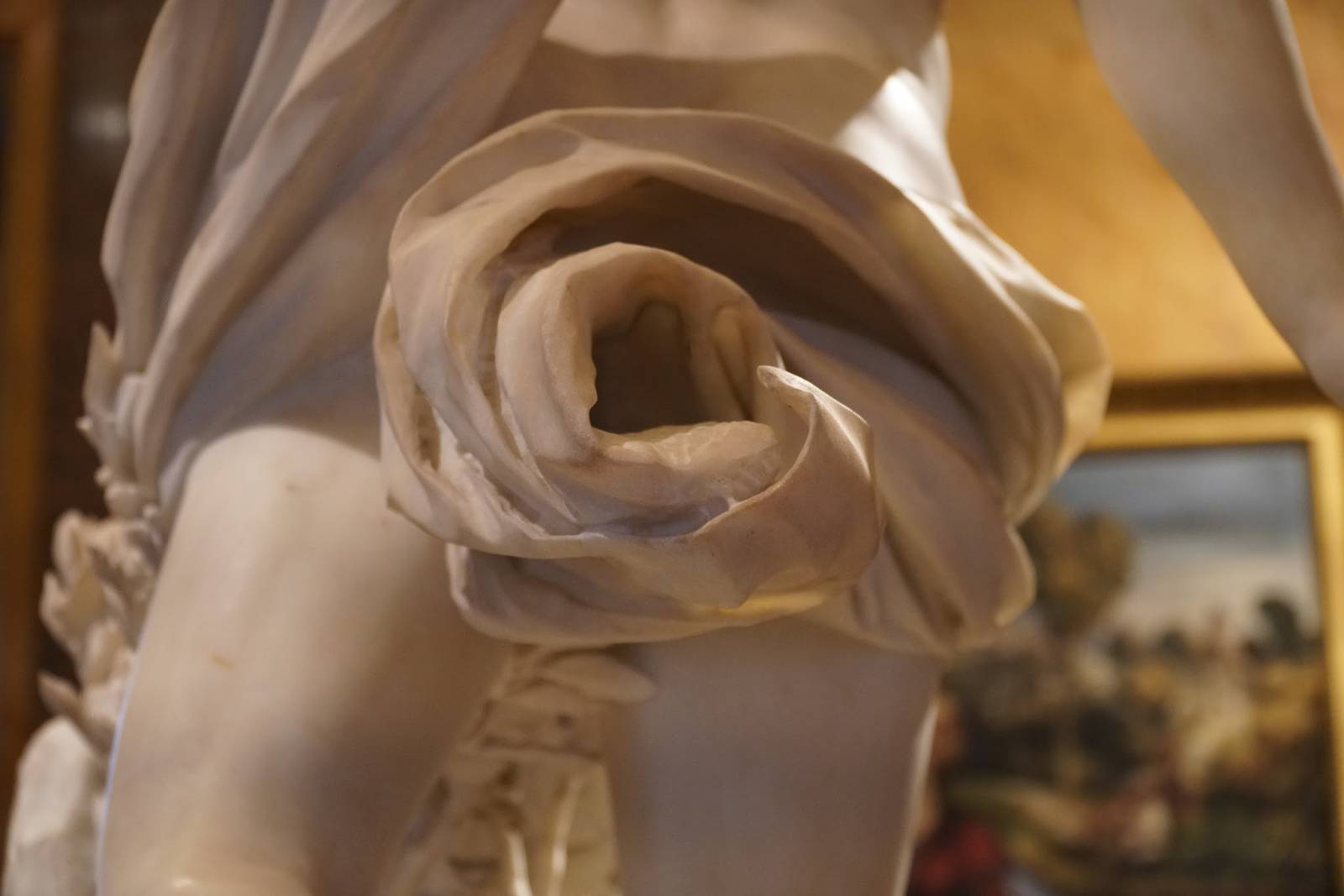
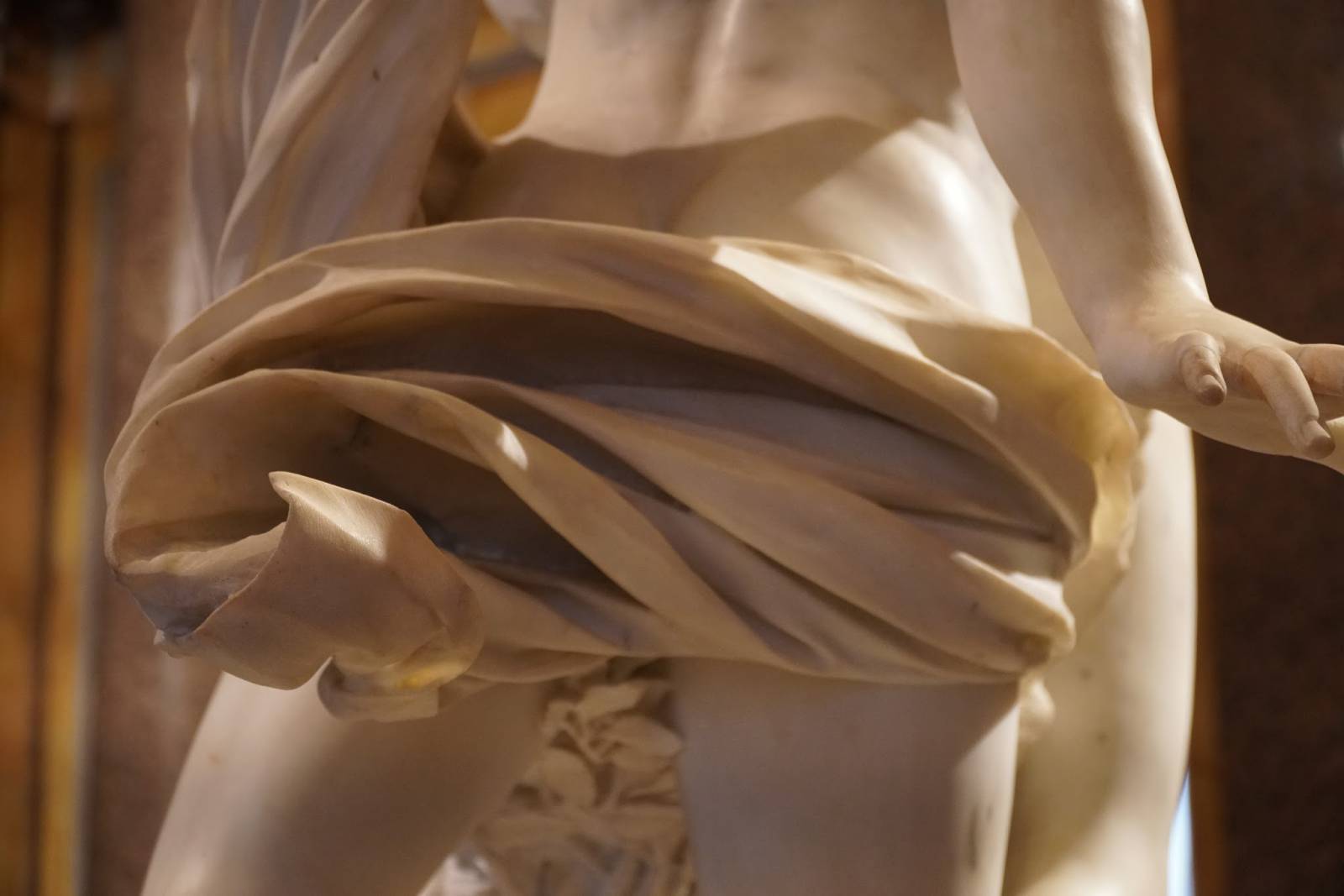
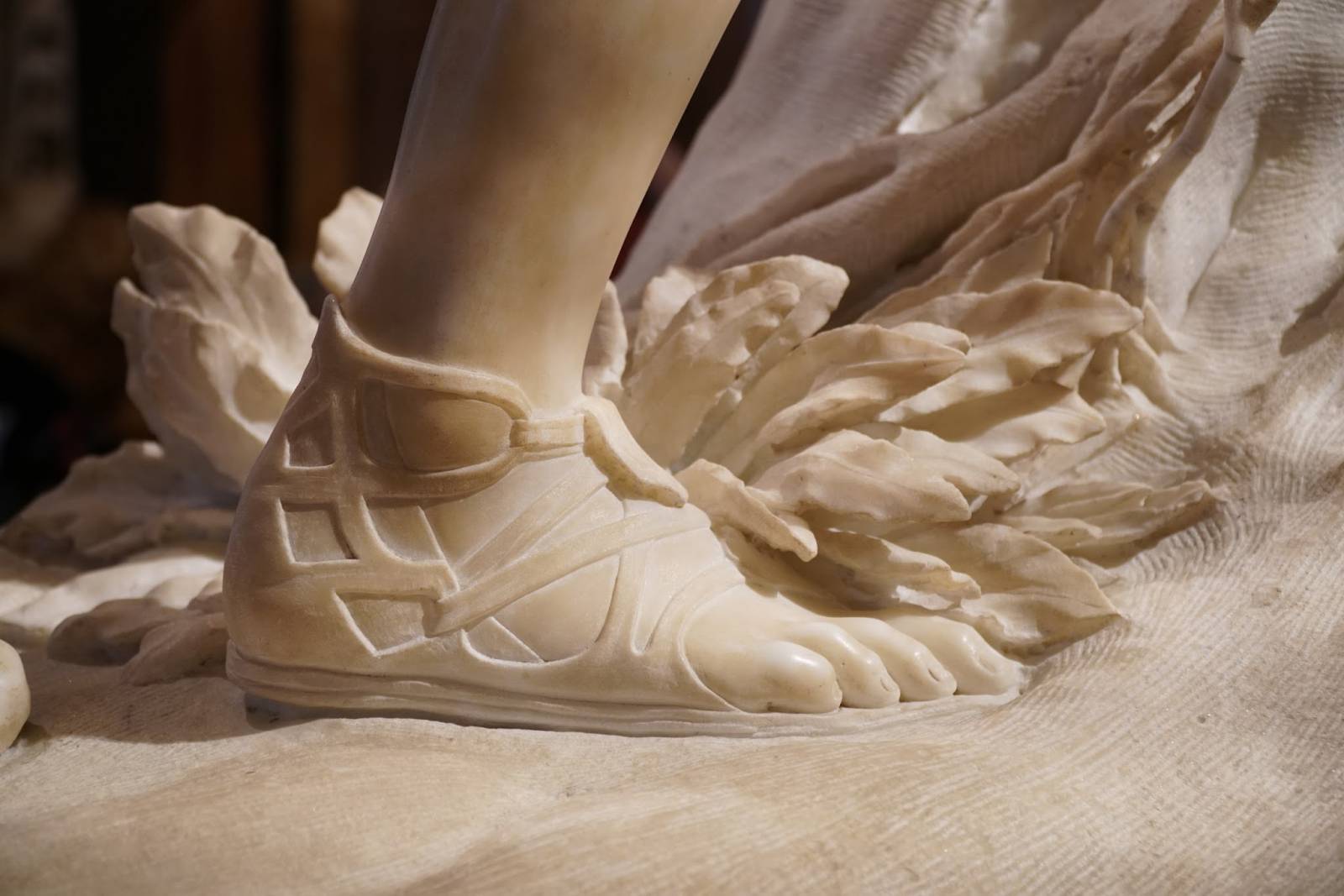
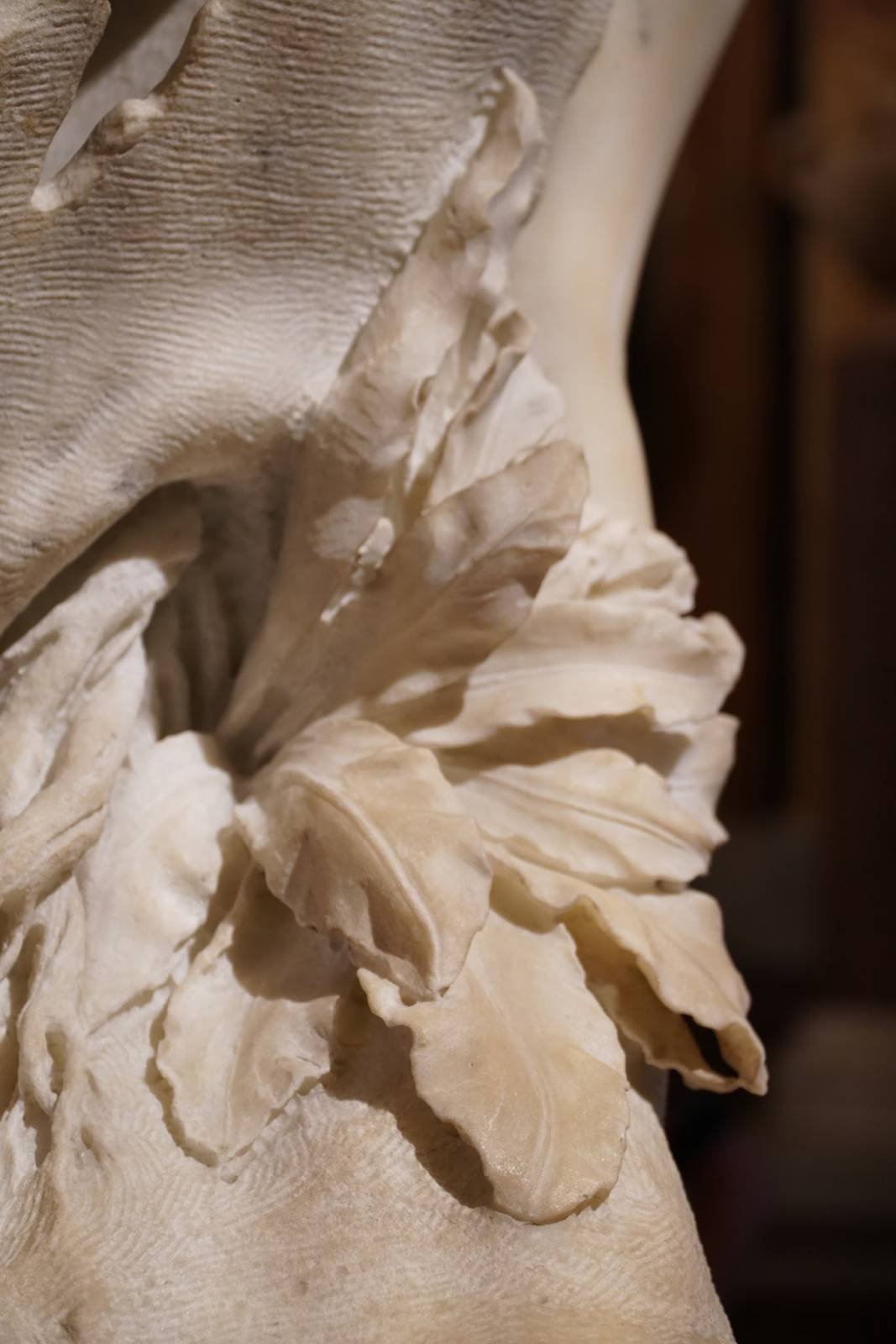
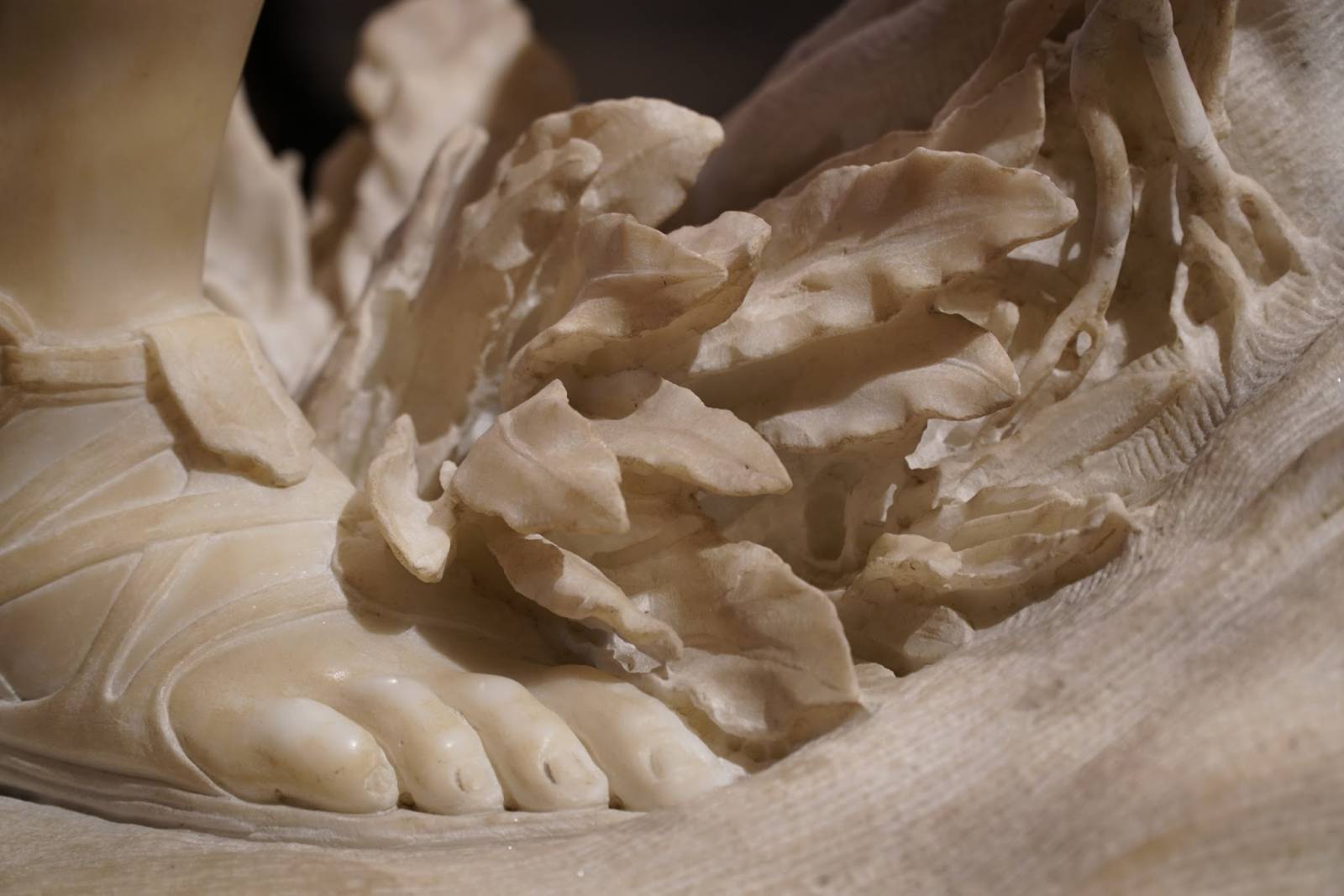
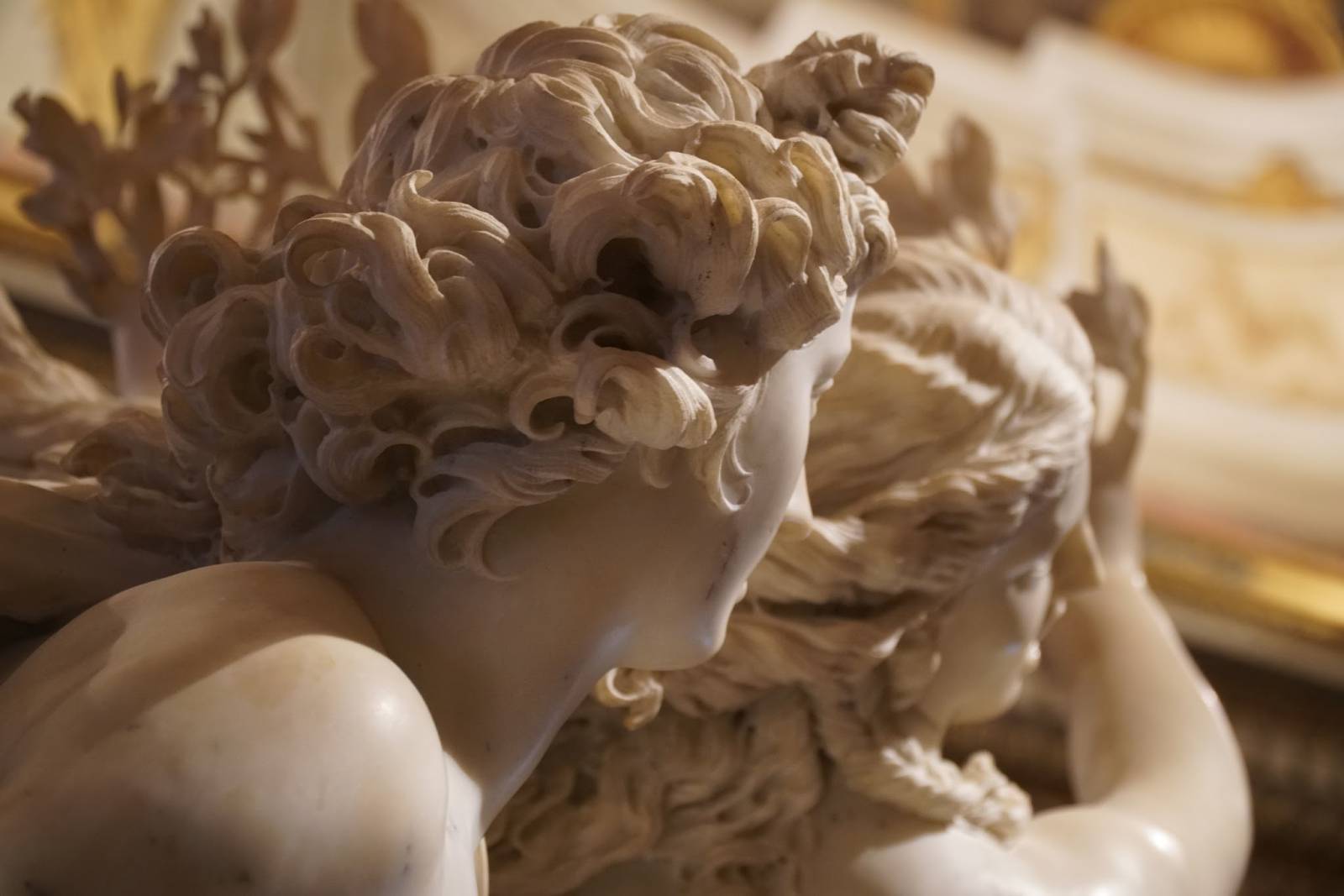
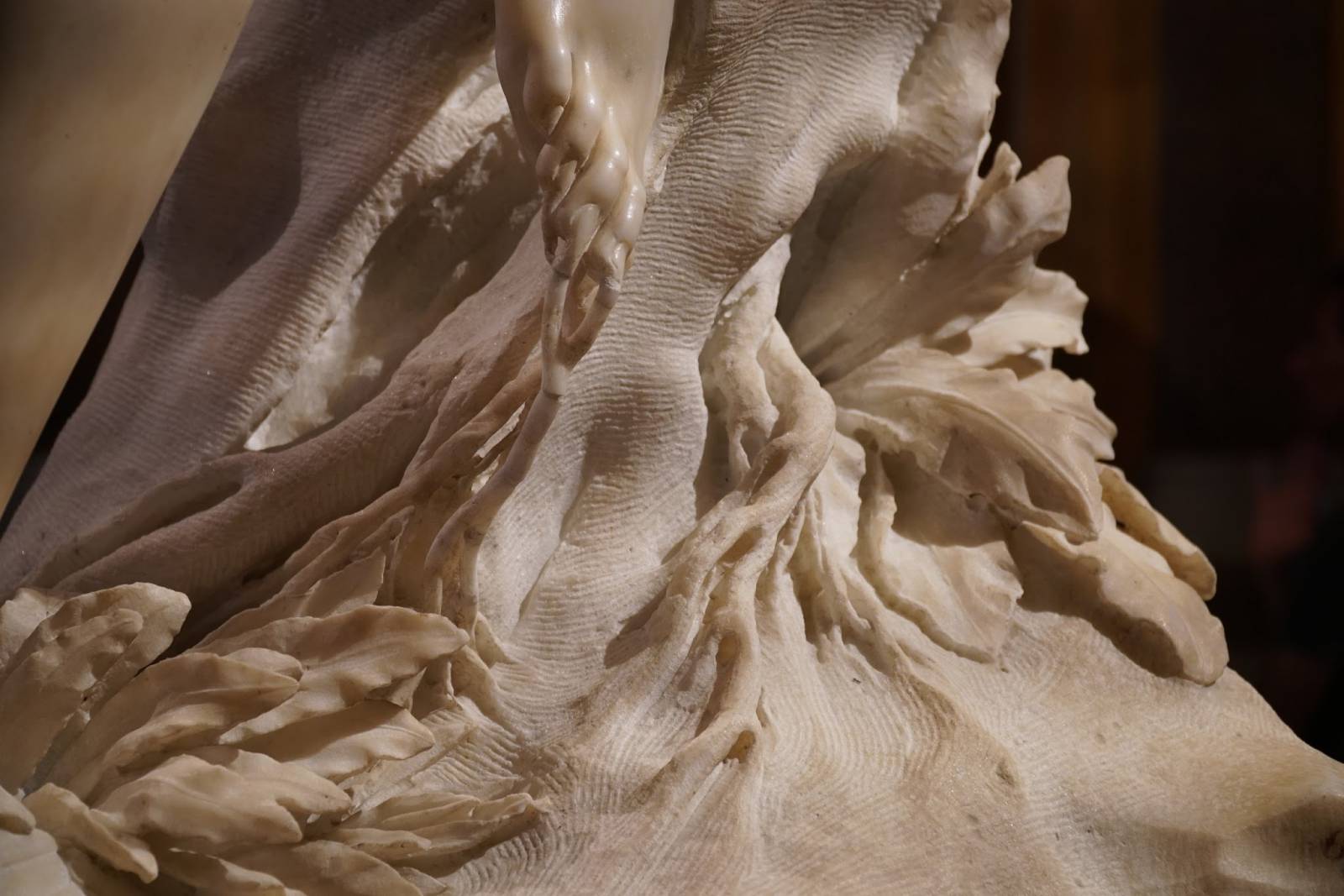
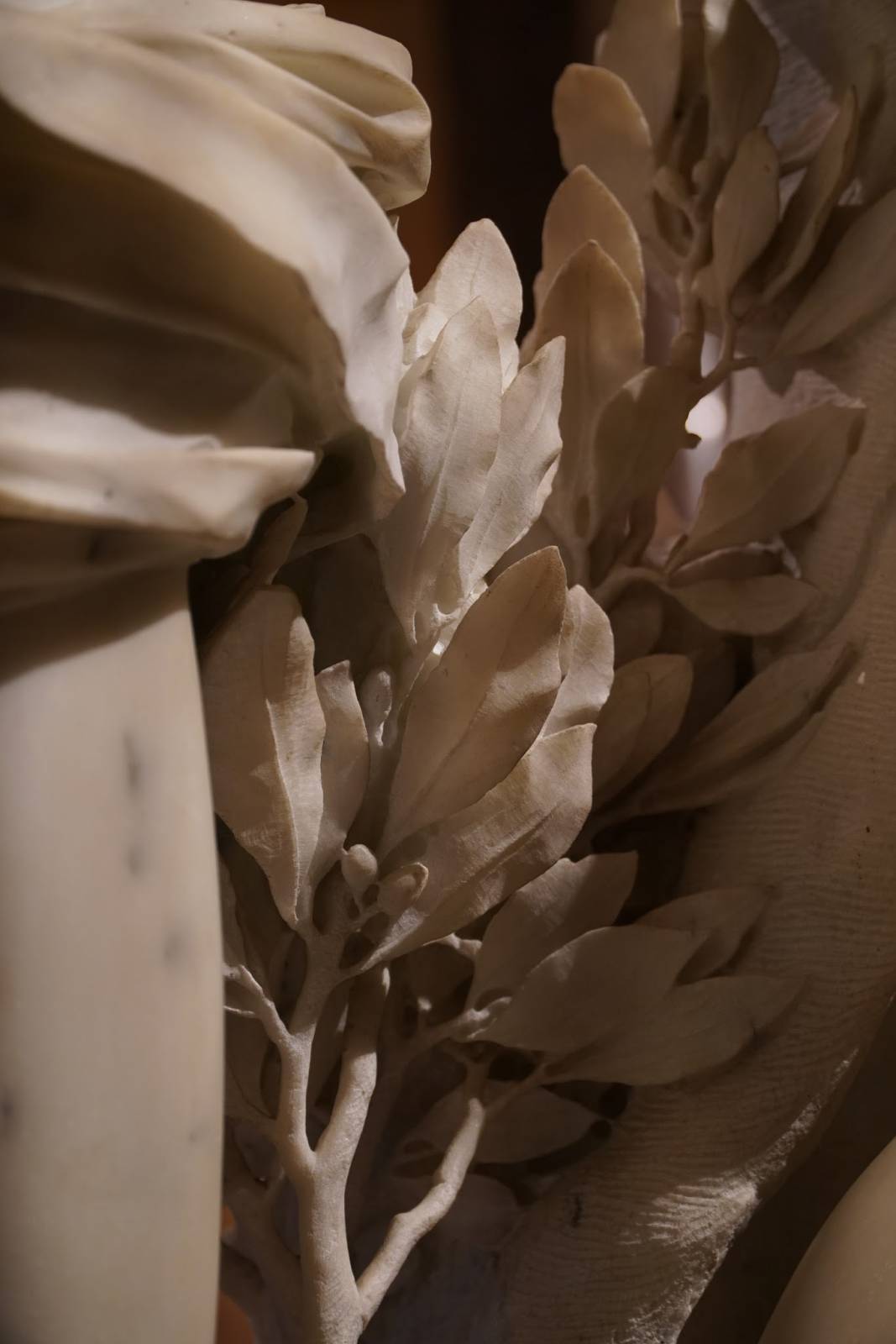
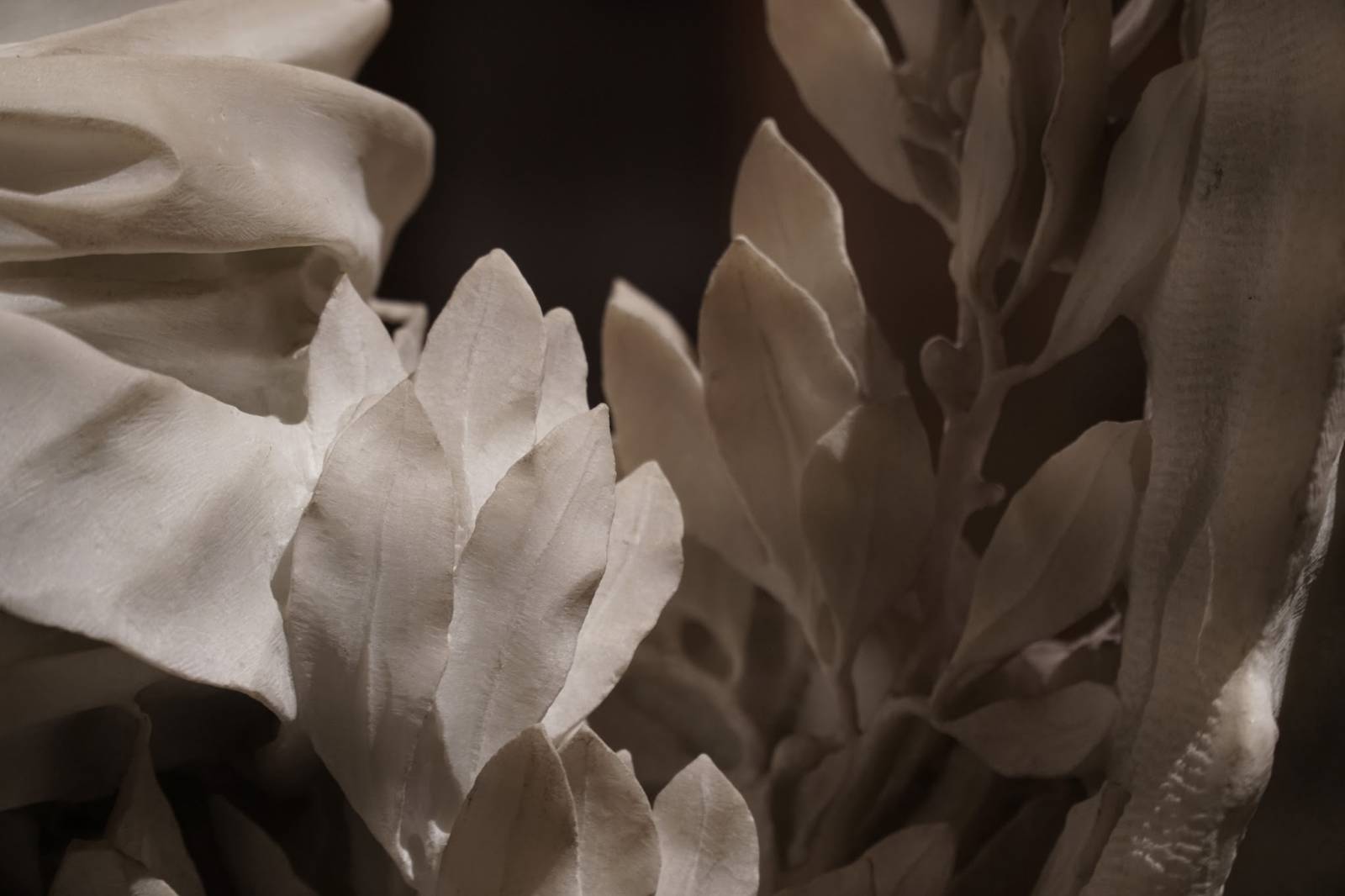
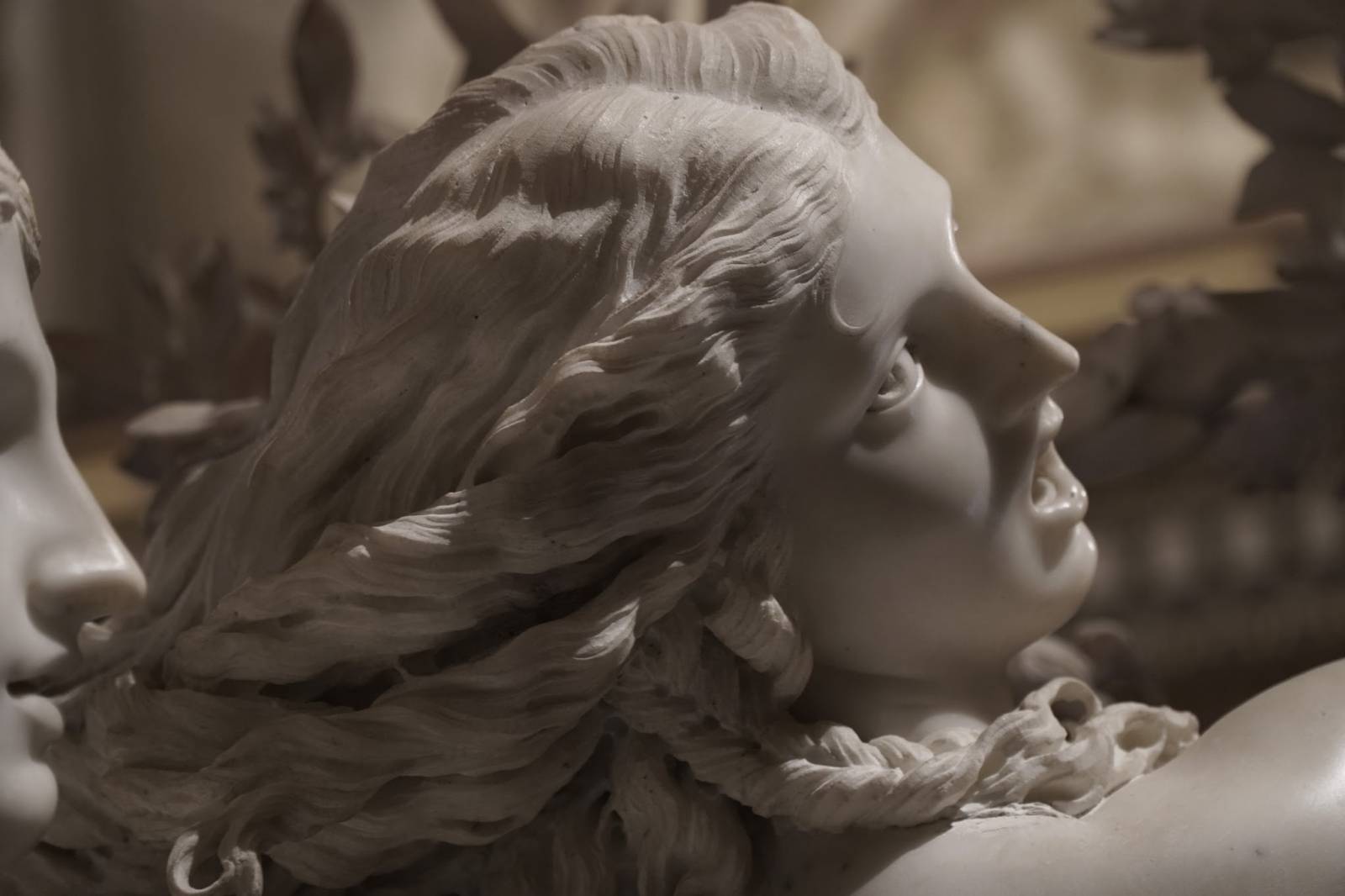
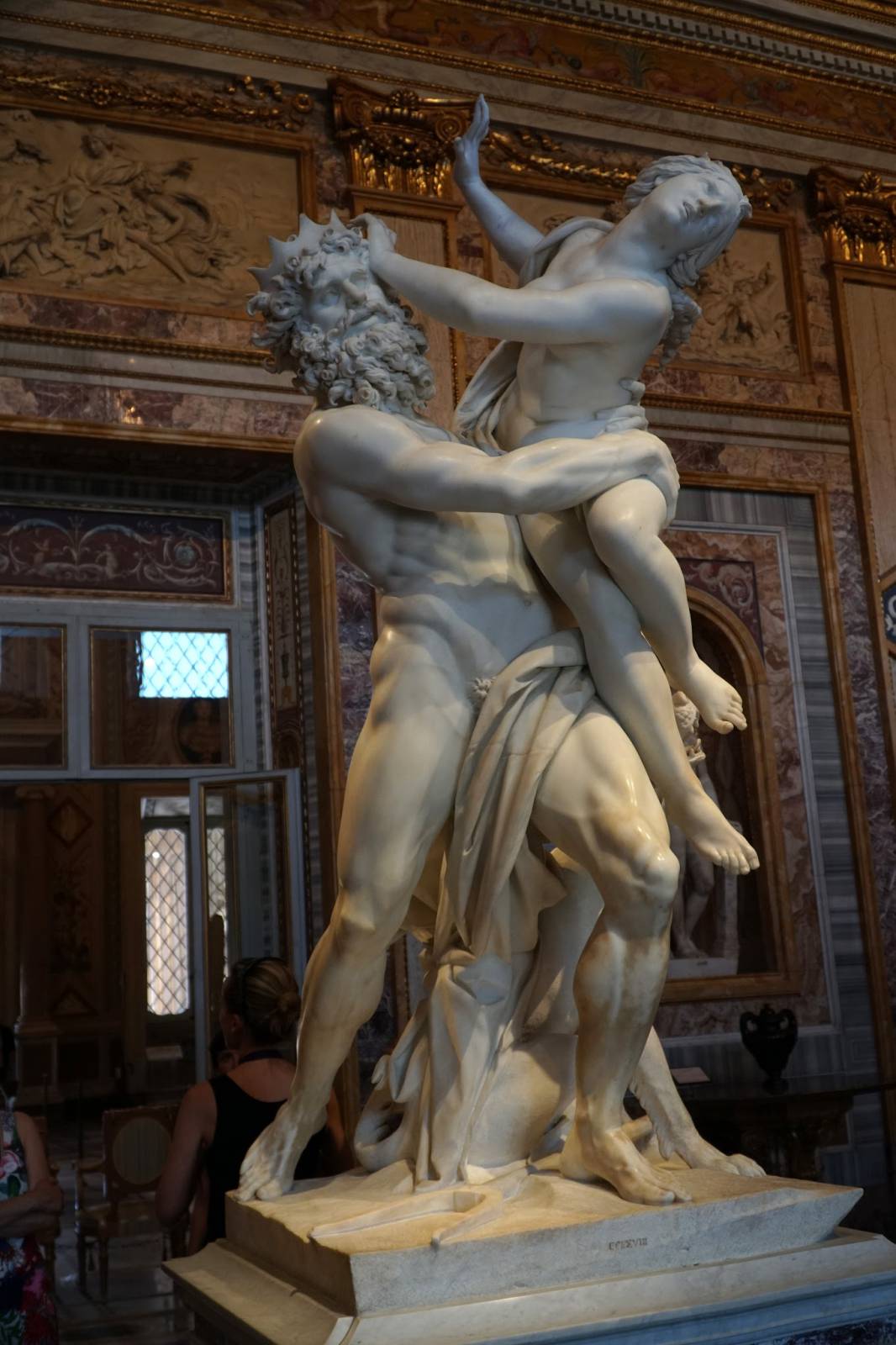
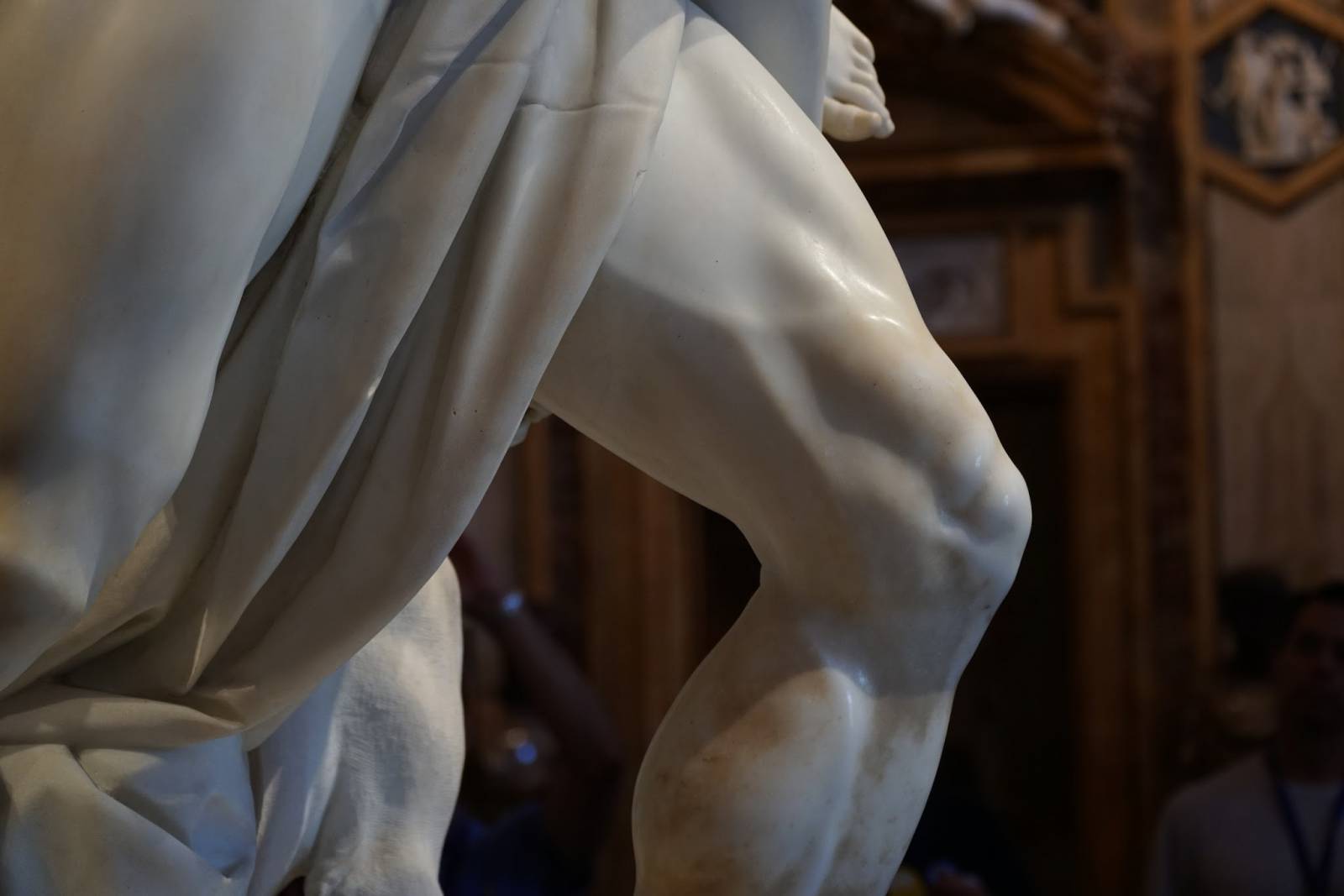
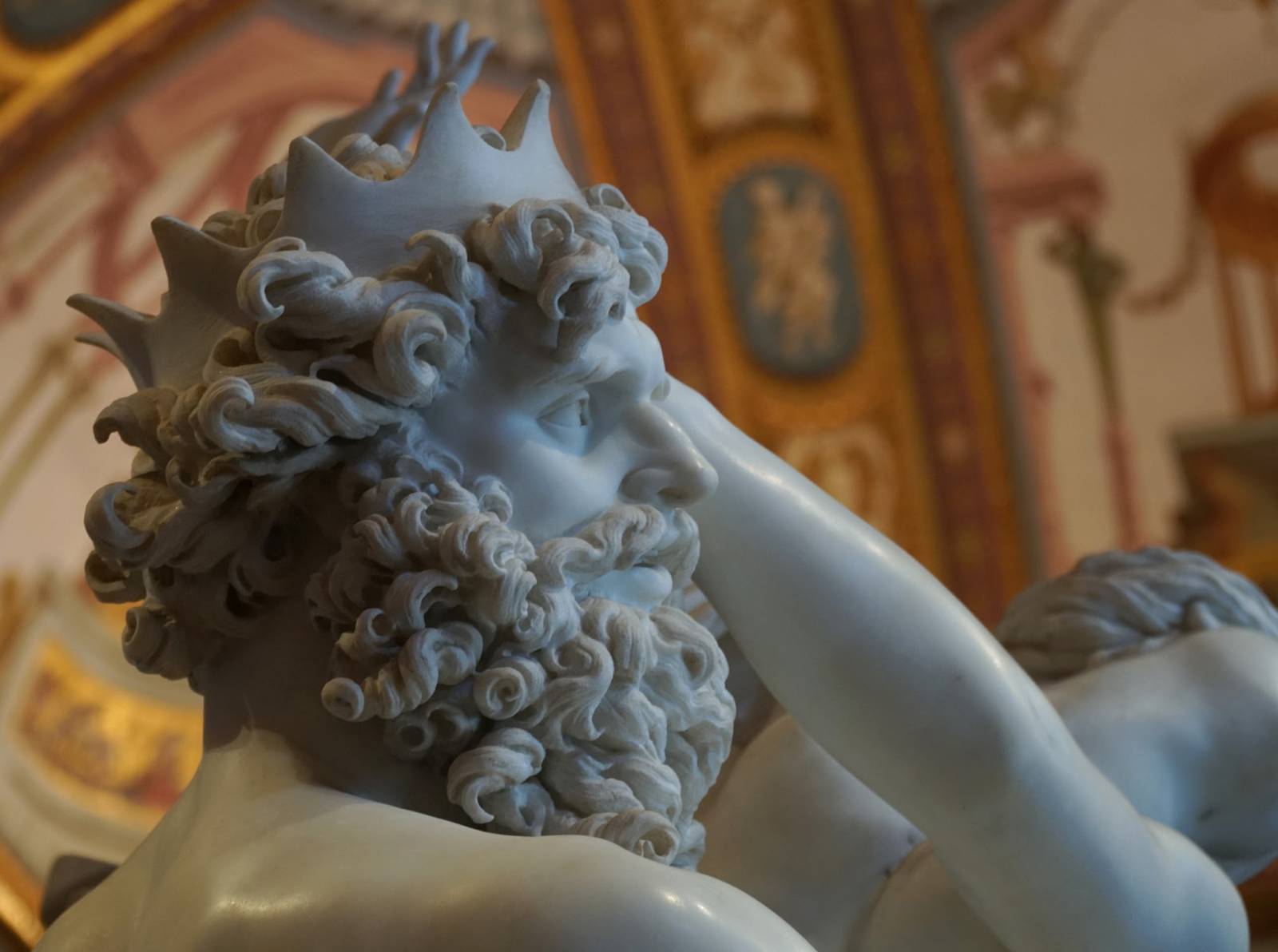
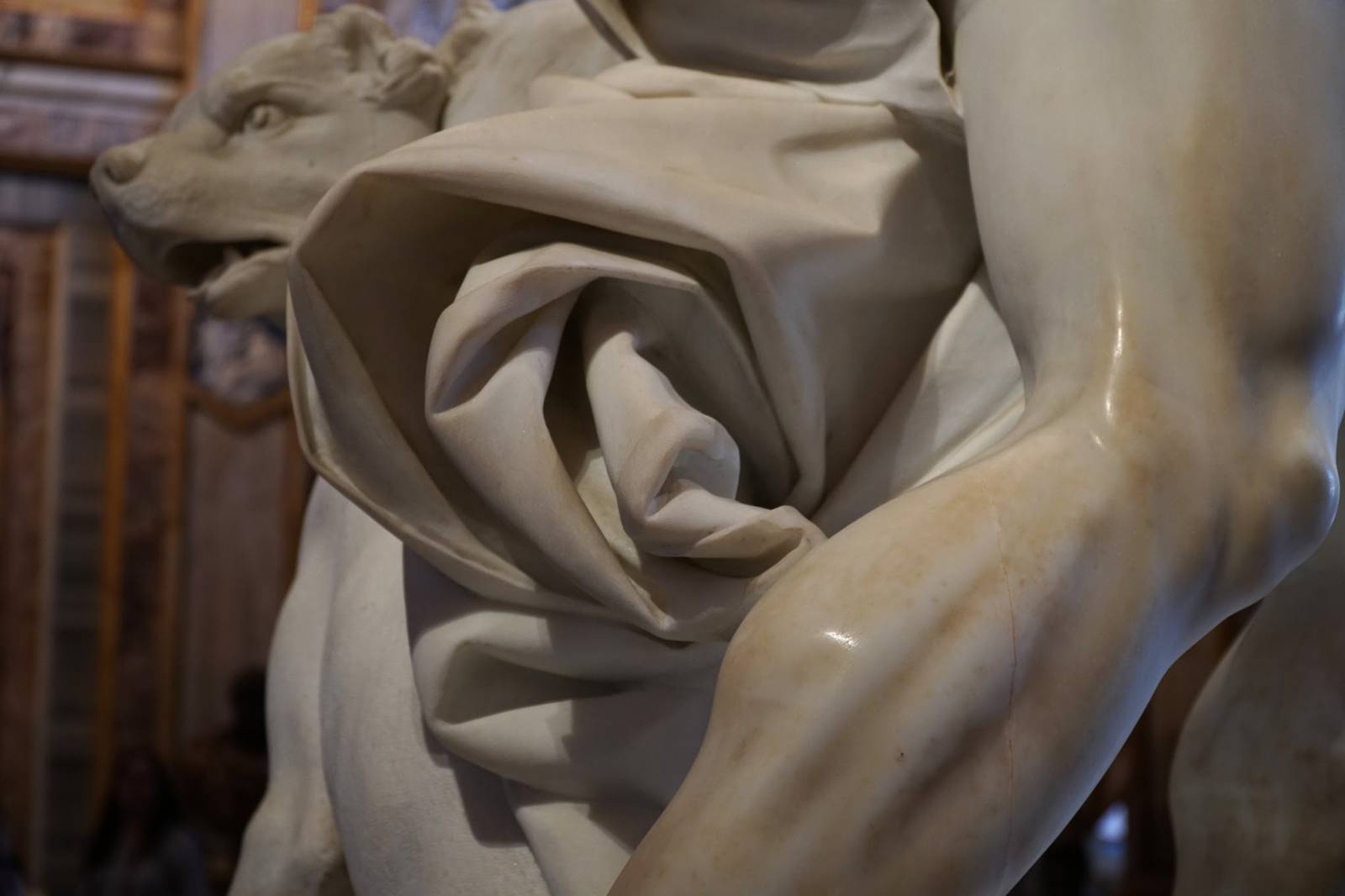
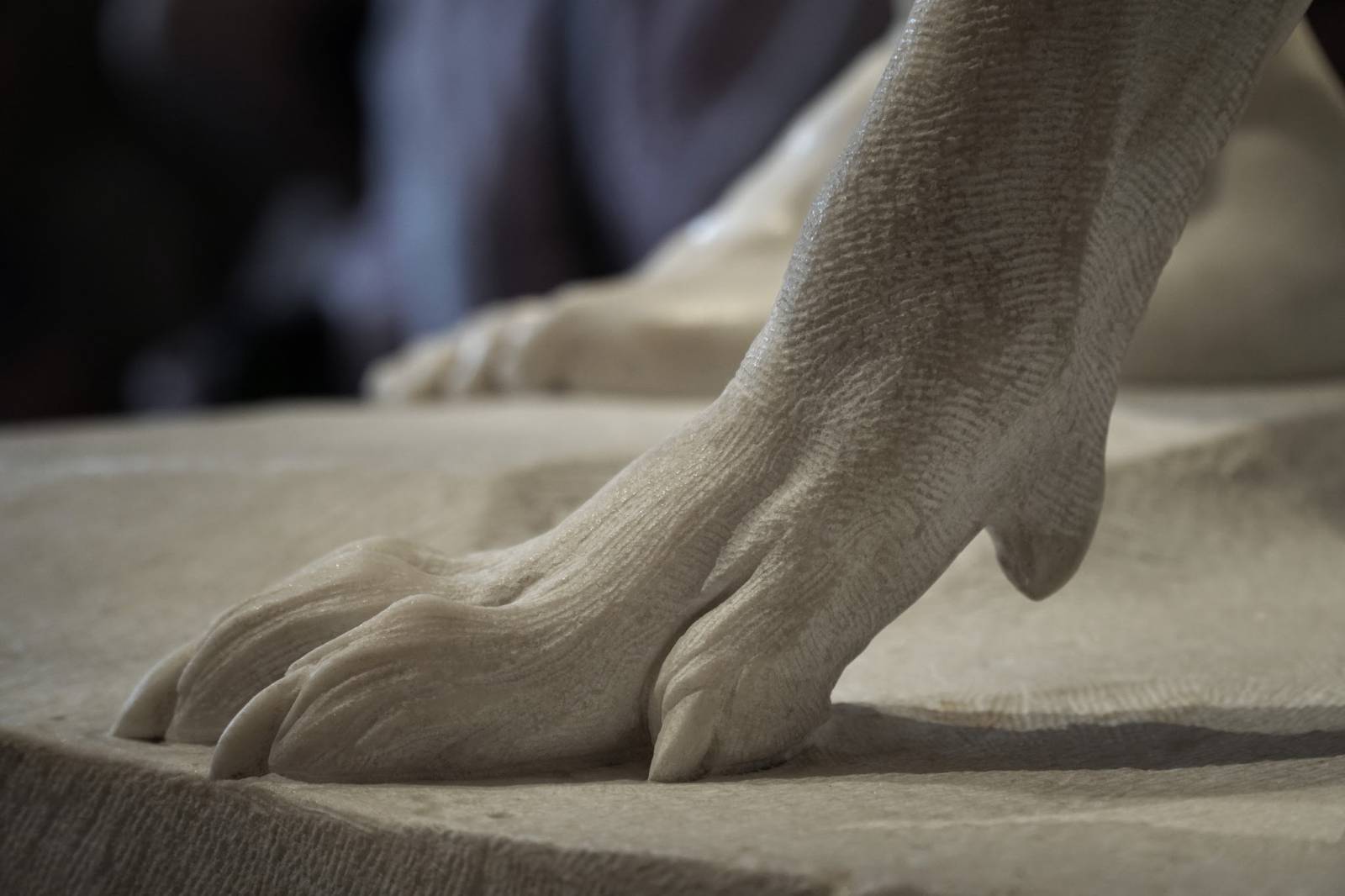
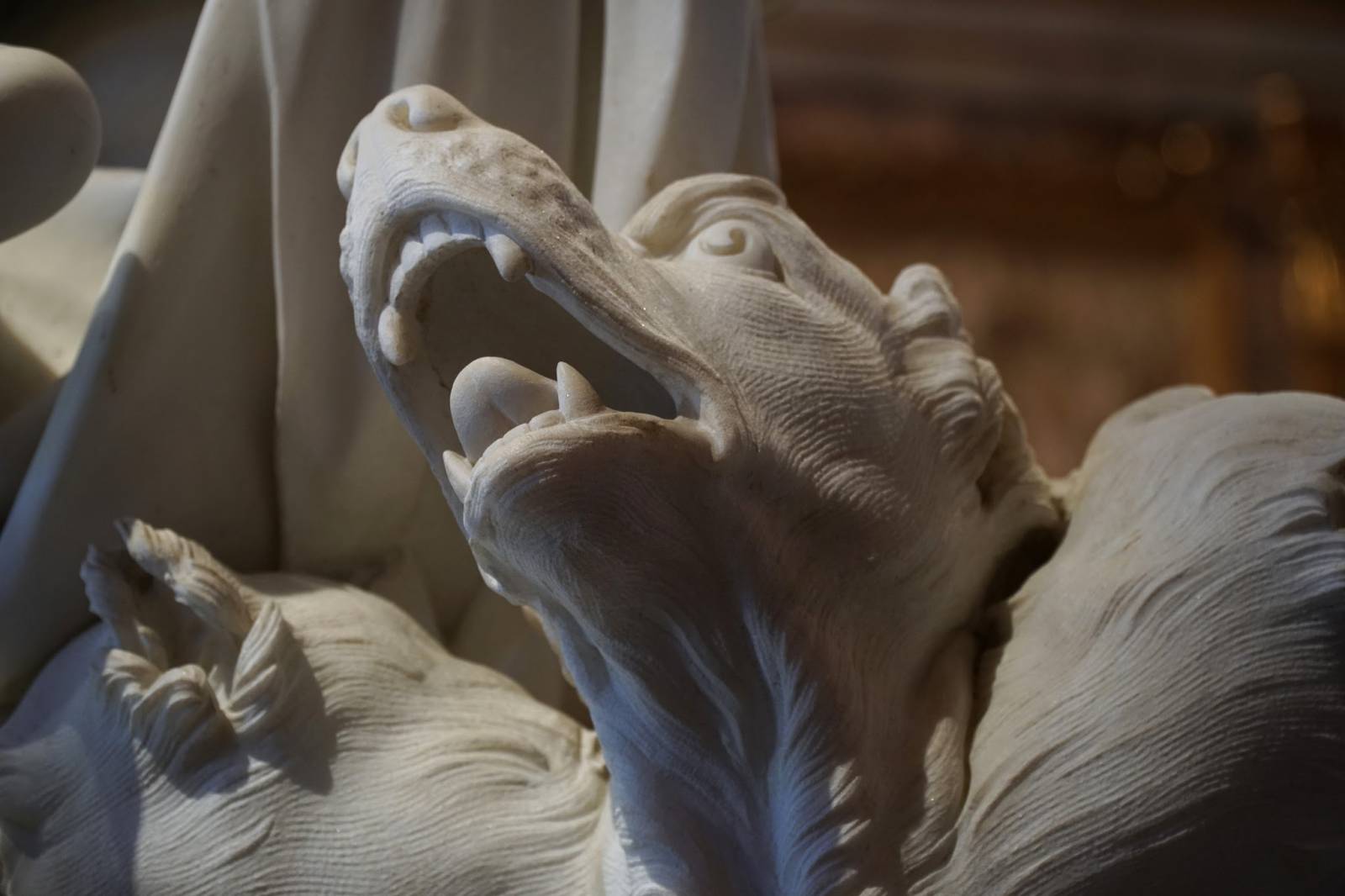
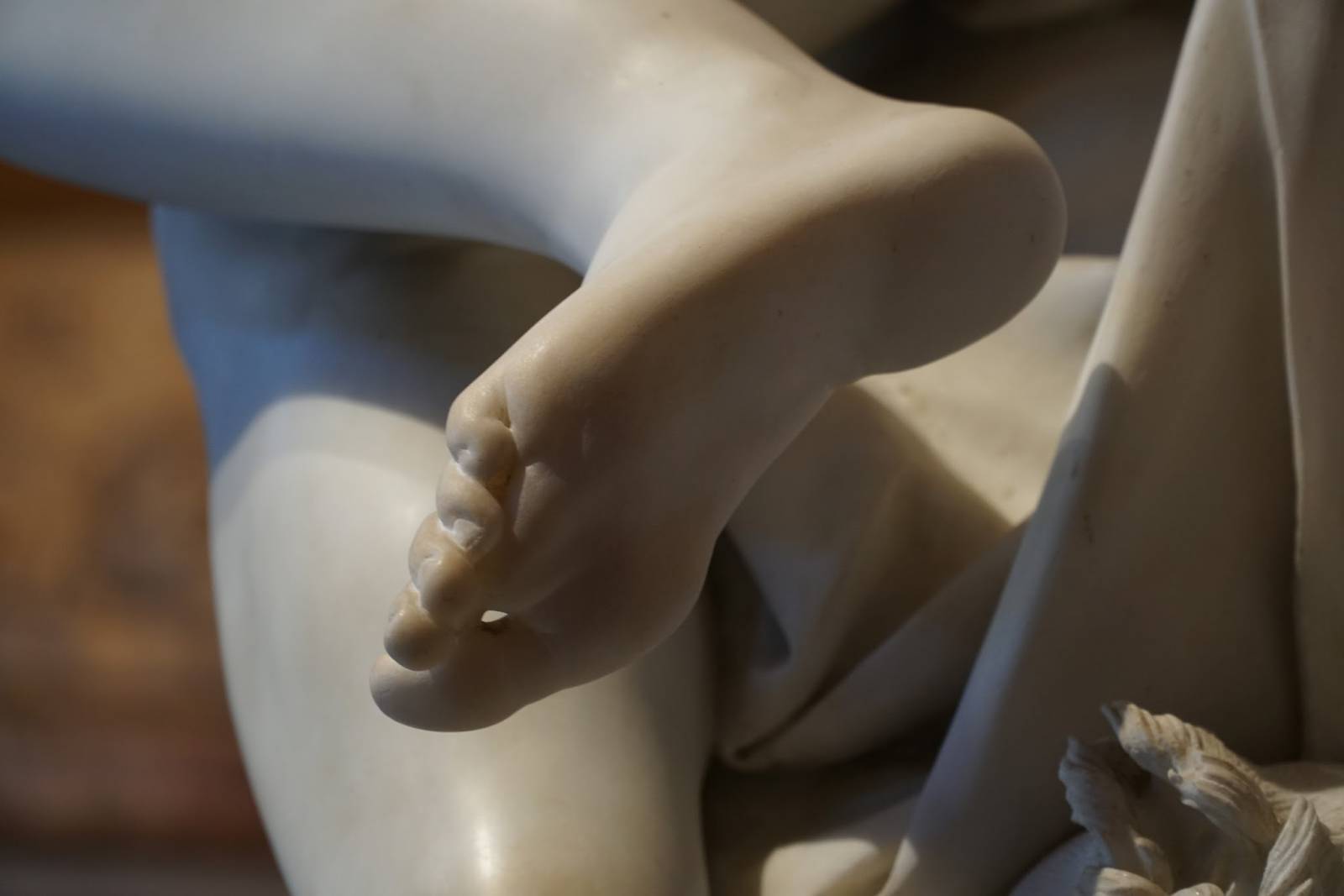
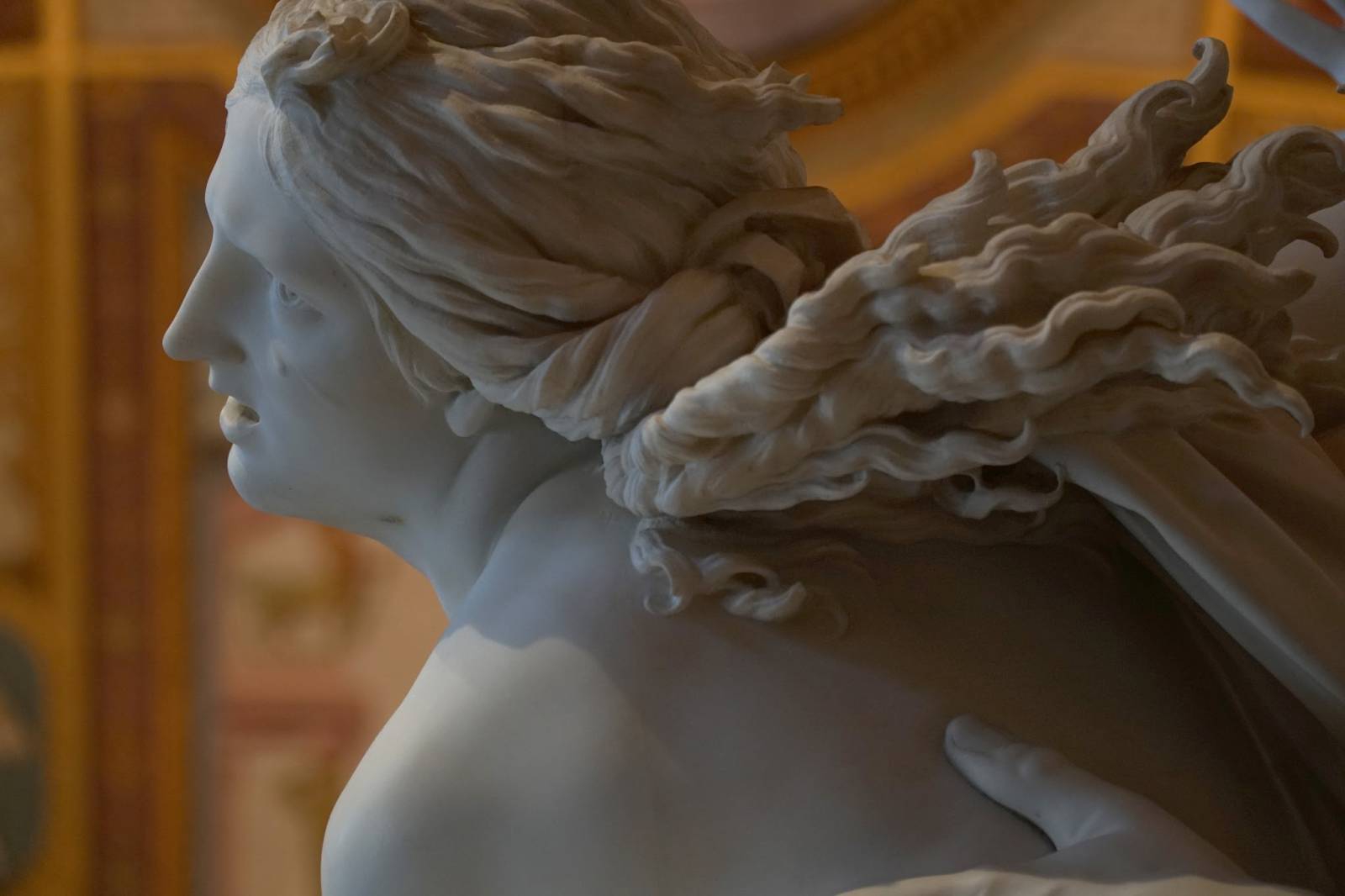
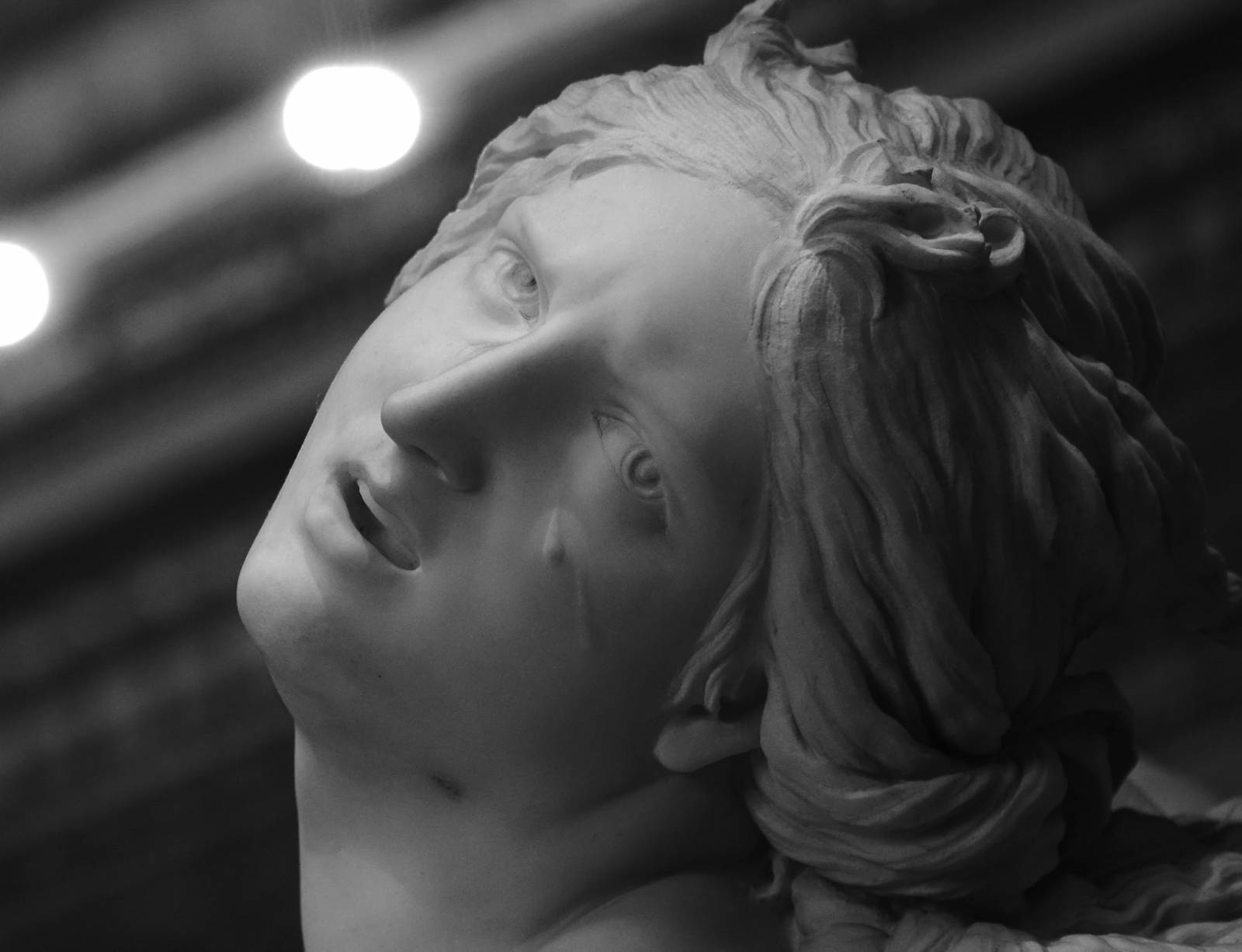
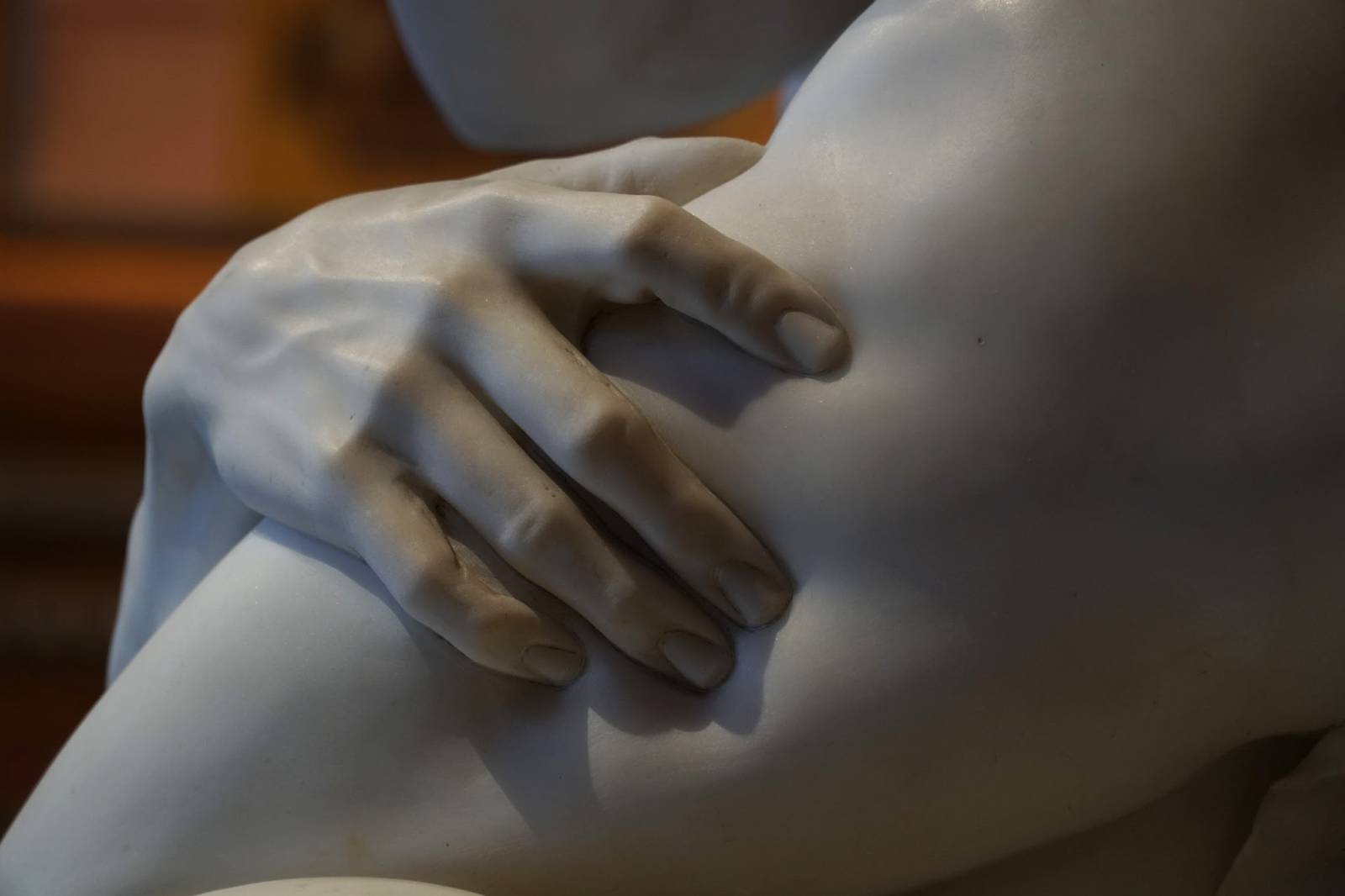
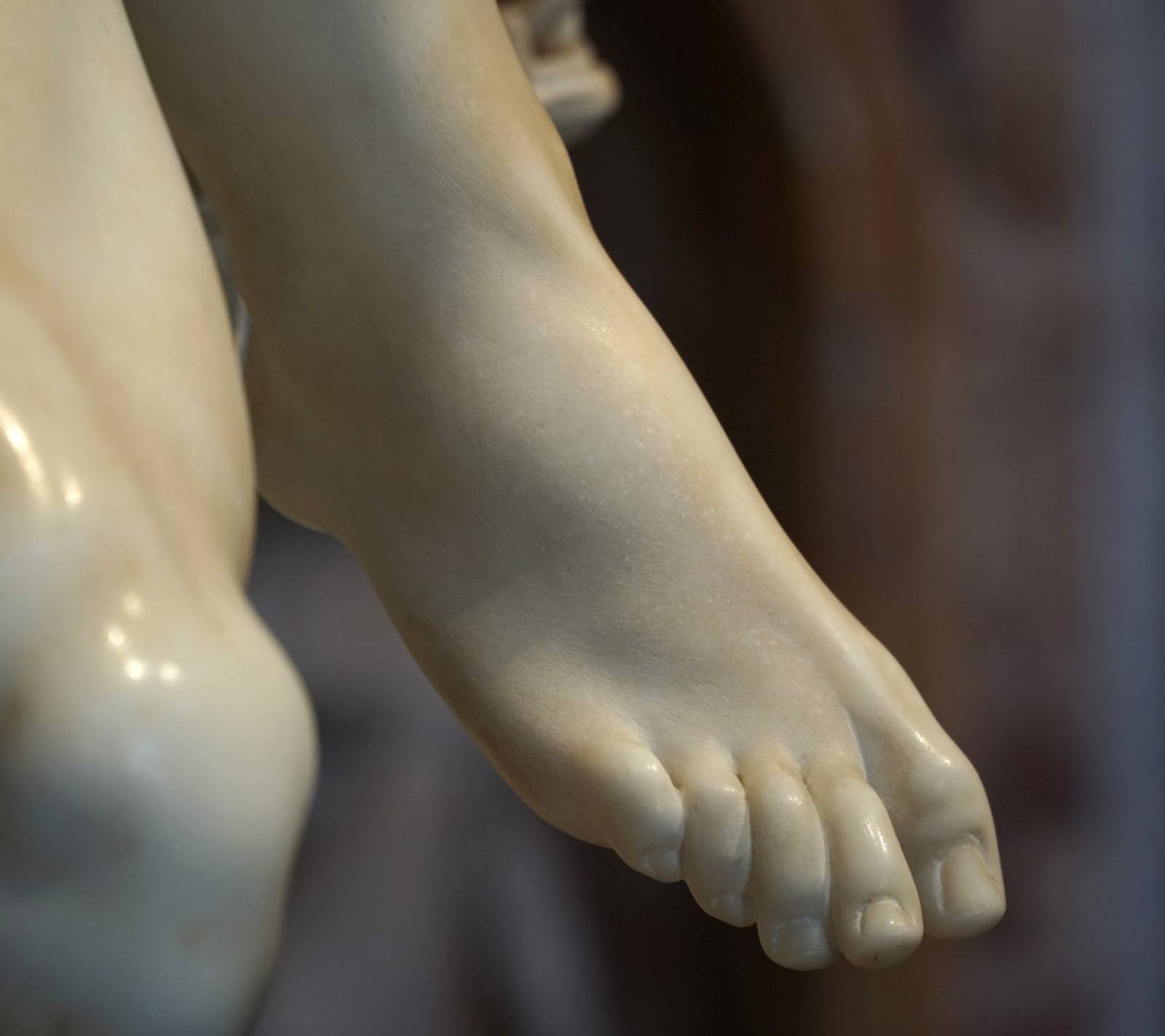
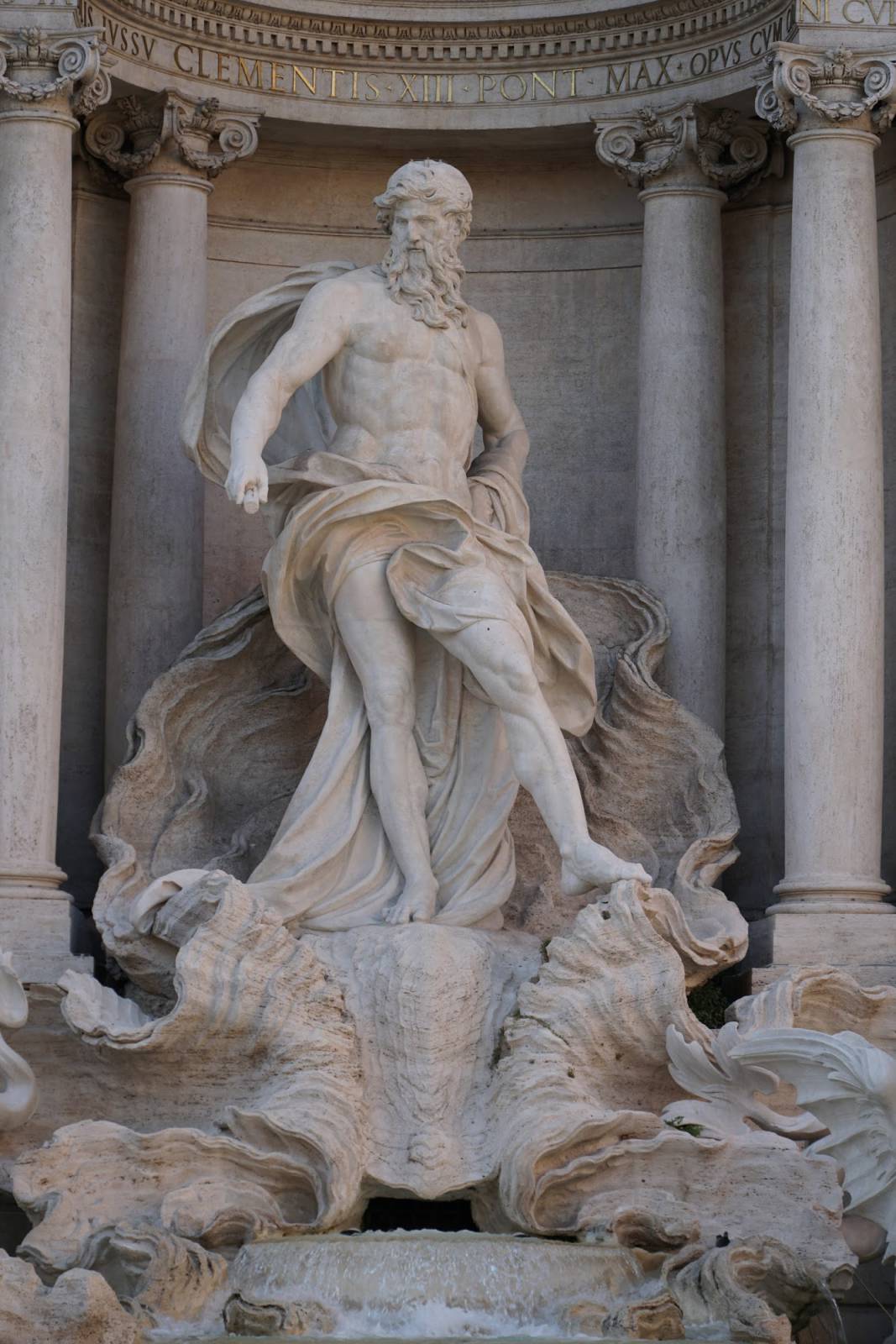
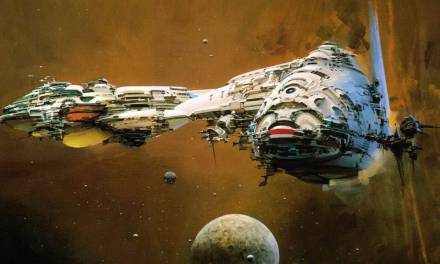
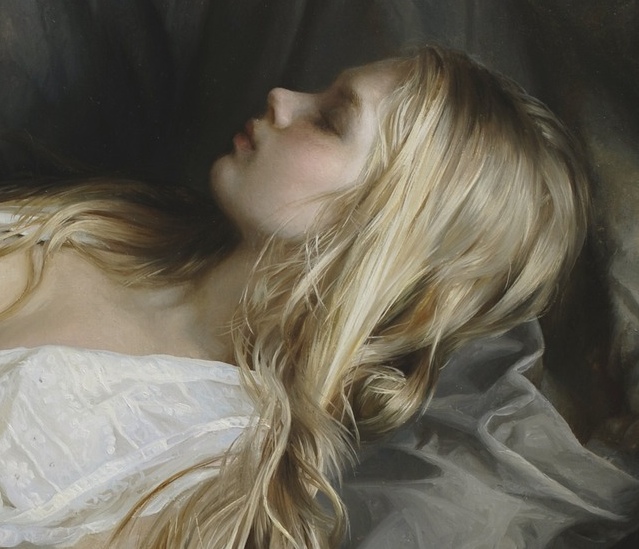


Thanks for the pics – and good commentary
Thanks Howard! The pictures of the armature are so unique and interesting and the detail pics are so inspiring. Looking forward to more travel posts.
How does he (and others) make things like fingers and leafs and other very delicate parts of the carving without breaking them off. As the British say, I'm gob-smacked. Thanks Howard.
For me, Bernini's David bests Michelangelo's effort in nearly every way. Michelangelo's David has the scale and presence, but Bernini's just has so much energy! Look at that face! That lip bite alone tells so much about Bernini's David compared to the stoic look of the other David.
And like you, I have no idea how they could even begin to tackle the complex forms of hair and fabric in stone. It completely baffles me.
I have seen these sculptures like most people from photos, but when I had a chance to see them in person at the Borghese, I got quite emotional. You don't really understand how unbelievably skilled he had to of been to create these.
My wife, who is not an artist, was taken aback when she saw them. She kept saying that the marble looked like real skin. As an artist, I couldnt even explain to her how he did it, I was at a loss for words and couldnt stop tears from leaking out of my eyes.
When you visit Rome, you can throw a rock in any direction and hit a spectacular piece of art, but, when you see these sculptures at the Borghese in person, its just a different level.
Thanks for posting these photos, they brought back great memories.
My favorite classical sculptor! Thanks for the pictures.
please don't throw rocks at the sculptures
Many thanks. Great photos!